
The Crisis of Crowding: Quant Copycats, Ugly Models, and the New Crash Normal
by
Ludwig B. Chincarini
Published 29 Jul 2012
With leverage and quant copycats running for the exits, LTCM found itself trapped in the fire. CHAPTER 2 Meriwether’s Magic Money Tree We’re sucking up nickels from all over the world. —Myron Scholes The Birth of Bond Arbitrage In 1974, John Meriwether, having just received his MBA from the University of Chicago, went to work as a government bond trader at Salomon Brothers. In those days, bond trading was not a quantitative endeavor. Traders bought or sold bonds they thought looked good or bad. John Meriwether realized that bond pricing was highly quantitative and saw that, if he could tap into this quantitative pricing, he could not only outperform his industry peers but make lots of money as well.
…
Meriwether approached Merrill Lynch’s Herbert Allison to tell him that the opportunities were large and the fund just needed more capital, which might have sounded like a double down plan. He asked if Merrill could invest between $300 and $500 million. Merrill refused.4 Eric Rosenfeld called PaineWebber, but it said no. John Meriwether met with Stanley Druckenmiller, the chief strategist and CIO for George Soros. It seemed that the Quantum Fund might contribute $500 million to the fund-raising efforts. LTCM also approached Julian Robertson of Tiger Management, but he declined. On August 26, Eric Rosenfeld and John Meriwether asked Warren Buffett for money. The next morning, Larry Hilibrand went to Omaha, Nebraska, to talk to Buffett. Buffett declined to invest because he thought the portfolio was too complicated.
…
Even with a new, more conservative risk management system, the LTCM crew was getting pulverized again. John Meriwether wrote in the March investor newsletter: The recent deleveraging and liquidity difficulties continued and intensified during March. Many of our strategies felt like they were at the center of market “storms…” We moved aggressively throughout March to reduce risk and increase liquidity…leverage [has been] cut roughly in half since Jan 1, 2008…we chose to reduce strategies which we believed had more “tail” risk or those more likely to be influenced by credit pricing effects…We appreciate your patience and trust during these difficult market conditions. —John Meriwether, letter to investors, April 17, 2008 JWMP’s RVOP fund began the month with $1,156 million in assets and finished the month with $865 million in assets, with no withdrawals in between.
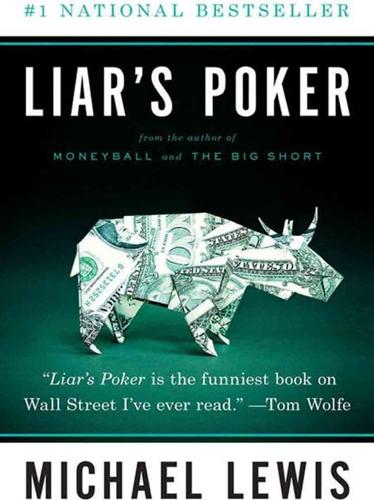
Liar's Poker
by
Michael Lewis
Published 1 Jan 1989
The bond traders of Goldman, Sachs, First Boston, Morgan Stanley, Merrill Lynch, and other Wall Street firms all play some version of Liar's Poker. But the place where the stakes run highest, thanks to John Meriwether, is the New York bond trading floor of Salomon Brothers. The code of the Liar's Poker player was something like the code of the gunslinger. It required a trader to accept all challenges. Because of the code—which was his code— John Meriwether felt obliged to play. But he knew it was stupid. For him, there was no upside. If he won, he upset Gutfreund. No good came of this. But if he lost, he was out of pocket a million bucks.
…
I always assumed that he smoked a more expensive blend than the rest, purchased with a few of the $40 million he had cleared on the sale of Salomon Brothers in 1981 (or a few of the $3. 1 million he paid himself in 1986, more than any other Wall Street CEO). This day in 1986, however, Gutfreund did something strange. Instead of terrifying us all, he walked a straight line to the trading desk of John Meriwether, a member of the board of Salomon Inc. and also one of Salomon's finest bond traders. He whispered a few words. The traders in the vicinity eavesdropped. What Gutfreund said has become a legend at Salomon Brothers and a visceral part of its corporate identity. He said: "One hand, one million dollars, no tears."
…
What I think Gutfreund had in mind in this instance was a desire to show his courage, like the boy who leaps from the high dive. Who better than Meriwether for the purpose? Besides, Meriwether was probably the only trader with both the cash and the nerve to play. The whole absurd situation needs putting into context. John Meriwether had, in the course of his career, made hundreds of millions of dollars for Salomon Brothers. He had an ability, rare among people and treasured by traders, to hide his state of mind. Most traders divulge whether they are making or losing money by the way they speak or move. They are either overly easy or overly tense.
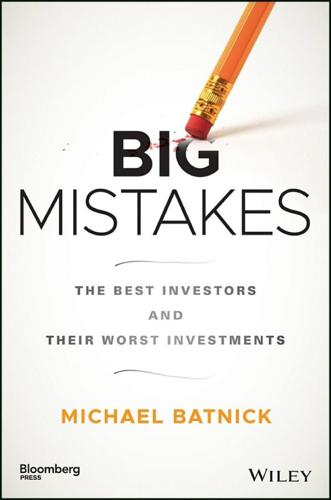
Big Mistakes: The Best Investors and Their Worst Investments
by
Michael Batnick
Published 21 May 2018
Michael Mauboussin has written about this idea many times, and he calls it the paradox of skill. The takeaway is that there is a lot of skilled market participants; so, intelligence alone is not enough. Other skills are required. Genius and its limitations are exemplified in no better way than by studying John Meriwether and his band of Einsteins at Long‐Term Capital Management. John Meriwether founded Long‐Term Capital Management in 1994 and before that he enjoyed a legendary two‐decade career as head of the fixed‐income arbitrage group and vice chairman at Salomon Brothers. At Salomon, he surrounded himself with some of the brightest minds in the industry.
…
Table of Contents Cover Preface CHAPTER 1: Benjamin Graham Notes CHAPTER 2: Jesse Livermore Notes CHAPTER 3: Mark Twain Notes CHAPTER 4: John Meriwether Notes CHAPTER 5: Jack Bogle Notes CHAPTER 6: Michael Steinhardt Notes CHAPTER 7: Jerry Tsai Notes CHAPTER 8: Warren Buffett Notes CHAPTER 9: Bill Ackman Notes CHAPTER 10: Stanley Druckenmiller Notes CHAPTER 11: Sequoia Notes CHAPTER 12: John Maynard Keynes Notes CHAPTER 13: John Paulson Notes CHAPTER 14: Charlie Munger Notes CHAPTER 15: Chris Sacca Notes CHAPTER 16: Michael Batnick Notes About the Author Index End User License Agreement Since 1996, Bloomberg Press has published books for financial professionals, as well as books of general interest in investing, economics, current affairs, and policy affecting investors and business people.
…
Quoted in Elston Electric Company, “Mark Twain and the Telephone,” OldTelephones.com, May 29, 2012. 8. Ibid. 9. Krass, Ignorance, Confidence, and Filthy Rich Friends, 91. 10. Zacks, Chasing the Last Laugh, 6. 11. Krass, Ignorance, Confidence, and Filthy Rich Friends, 197. 12. Ibid., 201. 13. Quoted in Zacks, Chasing the Last Laugh, 67–70. CHAPTER 4 John Meriwether Genius's Limits Investment success accrues not so much to the brilliant as to the disciplined. —William Bernstein Isaac Newton advanced science and thinking like few others ever have. With an IQ of 190, and the ability to calculate to the 55th decimal by hand, his intellect towered above Charles Darwin and Stephen Hawking.
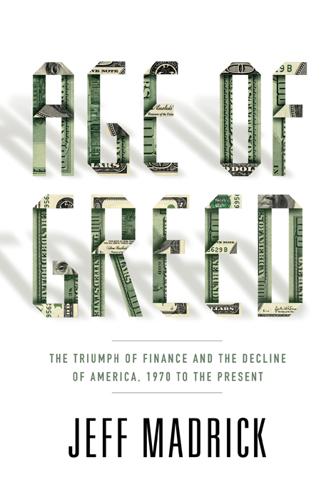
Age of Greed: The Triumph of Finance and the Decline of America, 1970 to the Present
by
Jeff Madrick
Published 11 Jun 2012
Jimmy Carter Capitulation 10. Howard Jarvis and Jack Kemp Tapping the Anger 11. Paul Volcker, Jimmy Carter, and Ronald Reagan Revolution Completed Two THE NEW GUARD 12. Tom Peters and Jack Welch Promises Broken 13. Michael Milken “The Magnificent” 14. Alan Greenspan Ideologue 15. George Soros and John Meriwether Fabulous Wealth and Controversial Power 16. Sandy Weill King of the World 17. Jack Grubman, Frank Quattrone, Ken Lay, and Sandy Weill Decade of Deceit 18. Angelo Mozilo The American Tragedy 19. Jimmy Cayne, Richard Fuld, Stan O’Neal, and Chuck Prince Collapse Epilogue Notes Acknowledgments Index Illustration Credits A Note About the Author Other Books by This Author Introduction This book starts with a relatively unknown man named Lewis Uhler, a Southern Californian, who, like his father before him, hated the New Deal.
…
In the 1950s, with the rise of Xerox, Kodak, IBM, Sears, Syntex, Merck, Johnson & Johnson, Hewlett-Packard, and others, innovation and regulation went hand in hand with financial stability, rising wages, and income equality. Had he achieved that record, he would have deserved the praise he had received. The unleashing of unregulated self-interest since the 1980s, he believed, was a sufficient condition for prosperity. 15 George Soros and John Meriwether FABULOUS WEALTH AND CONTROVERSIAL POWER Until the mid-1980s, the takeover movement was the way to make the most money on Wall Street. Men like Henry Kravis, George Roberts, Boone Pickens, and Carl Icahn built enormous fortunes, and by the 2000s all were billionaires. Icahn was frequently listed among the twenty-five richest Americans, eventually with some $8–9 billion in personal wealth, and Kravis and Roberts were reported to have about half that.
…
In the late 1980s, hedge funds managed less than $100 billion in funds, in the late 1990s, some $400 billion, and in the mid-2000s, $2 trillion. When they borrowed multiples of that, their buying capability became enormous. Hedge fund pioneer George Soros (Illustration credit 15.1) Long-Term Capital Management founder John Meriwether (Illustration credit 15.2) George Soros, a Hungarian immigrant who arrived in America in the 1950s, became the unquestioned leader among hedge fund managers and remained so for twenty-five years. According to an estimate by Financial World magazine, Soros earned $200 million in 1987, second only to Michael Milken’s unprecedented earnings that year of $550 million.
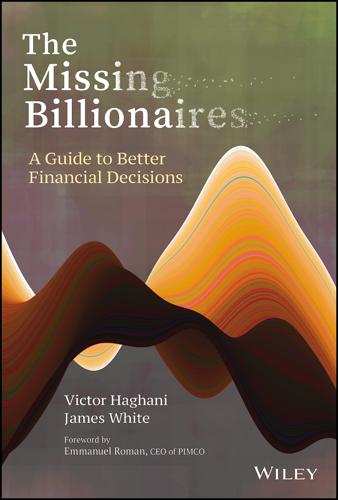
The Missing Billionaires: A Guide to Better Financial Decisions
by
Victor Haghani
and
James White
Published 27 Aug 2023
About the Authors Victor Haghani has spent four decades actively involved in markets and financial innovation. He started his career in 1984 at Salomon Brothers in bond research. He moved to the trading floor in 1986 and shortly after became a managing director in the bond arbitrage group run by John Meriwether. In 1993, Victor was a cofounding partner of Long‐Term Capital Management (LTCM). He established and co‐ran its London office. His participation in the failure of LTCM was a life‐changing experience that led him to question and revise much of the way he thought about the economy, markets, and investing.
…
We have been blessed to have patient and caring teachers right from the start of our careers, including (for Victor) Bob Kopprasch, Bill Krasker, Robert Merton, Chi‐fu Huang, and Myron Scholes, and (for James) Sean Becketti, Nessan Fitzmaurice, and Vladimir Piterbarg. We thank our colleagues and co‐travelers who have shared so much of their wisdom and experience with us, in particular John Meriwether, Larry Hilibrand, Rob Stavis, Richard Leahy, Eric Rosenfeld, Samir Bouaoudia, Larry Bernstein, Ephi Gildor, Hans Hufschmid, Hedi Kallal, David Heatley, Lord Jacob Rothschild, and Alan Howard. We have learned so much from each of you. Hedi Kallal first introduced us and saw that we were both on the same intellectual journey and would benefit from traveling it together.
…
$1,000,000, No Tears It seems fitting to finish this chapter with an example bringing us back to a situation that is essentially a single coin flip. The opening pages of Liar's Poker, Michael Lewis' classic take on Wall Street in the 1980s, describes an unconsummated and, according to the protagonists, apocryphal mano‐a‐mano hand between two senior Salomon Brothers executives. One of them, John Meriwether, was Victor's boss at the time: One hand, one million dollars, no tears. Meriwether grabbed the meaning instantly. The King of Wall Street, as Businessweek had dubbed Gutfreund, wanted to play a single hand of a game called Liar's Poker for a million dollars… The peculiar feature of Gutfreund's challenge this time was the size of the stake.
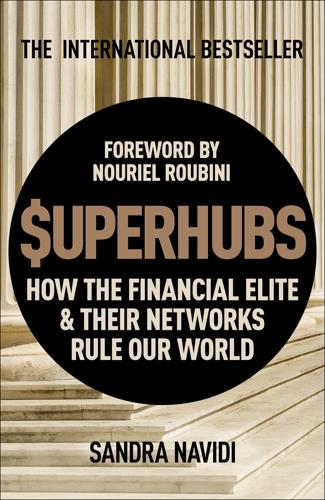
SUPERHUBS: How the Financial Elite and Their Networks Rule Our World
by
Sandra Navidi
Published 24 Jan 2017
We will examine how the system should be recalibrated in order to create a more inclusive society with a fairer economy that benefits all. CHAPTER 12 Super-Crash: “Executive Contagion” THE CRASH OF A TITAN: JOHN MERIWETHER Few people can take credit for generating billions of dollars in losses and single-handedly bringing01he0.inancial system to the brink of collapse. John Meriwether of Long Term Capital Management (LTCM) is one of them. At a wine tasting at Chef Daniel Boulud’s DBGB in the East Village, hosted by my friend Jim, a financier and avid wine collector, I met the now infamous Meriwether.
…
In a tribute to Château Mouton Rothschild, the theme of the tasting was “Mouton Madness.” An array of bottles had been carefully lined up on a side table, and the menu was designed to enhanc the tasting experience. As we mingled during the cocktail hour, I checked the place cards. To my delight, I saw that I would be seated by John Meriwether, the John Meriwether, who had made Wall Street history. In light of his colorful background, I expected a charismatic and swashbuckling personality who would mesmerize us with fascinating anecdotes; yet, contrary to my expectations, in walked a slight, unimposing, and shy man. He talked the entire evening about sports, despite my best efforts to move on to more compelling subjects.
…
.: The Financial Shadow Capital IMF Meetings in Istanbul: Dancing on the Titanic Power Summit: The Bilderberg Conference Stealth Power: Family Office Gatherings Feeding Off Power: Power Lunches Power Workout: Networking, Working, and Working Out “Superhub-Nobbing”: Private Parties The Higher Purpose of Networking: The Charity Circuit CHAPTER 8 OPPORTUNITY COSTS: THE DOWNSIDE OF THE UPSIDE Missing Out on Memorable Moments Stress Test: When Being a Superhub Is Not So Super Married to Their Jobs: Work-Family Life Imbalance Media Madness: Living Under a Microscope Super-Sick: Paying the Ultimate Price Clash of the Titans: Close Combat and Coups d’État Triumph and Defeat: A Turbulent Career CHAPTER 9 “WOMENOMICS”: THE MISSING LINK The Gender Gap: Women Missing in Action The Access Gap: Exclusive Means Excluding The Networking Gap: Schmooze or Lose The Assessment Gap: Performance versus Potential The Wage Gap: Selling Women Short The Failure Gap: Demoting Promotions The Mentoring Gap: Missing Out on Mentoring The Sexism Gap: The Wolves of Wall Street on the Prowl The Resilience Gap: Male Might and Female Feebleness Closing the Gender Gap: Superhub Christine Lagarde CHAPTER 10 REVOLVING SUPERHUBS: CREATING NETWORK MONOPOLIES Psychological Kidnapping The Revolving Door The Oscillating Megahub: Robert Rubin Open Doors: Tony Blair Cross-Connections: Cooperating Constructively in Times of Crises Launching a President “Legalized Corruption”: The Best Democracy Money Can Buy Purchasing Political Protection Relationship Power: Diffusing the Euro Time Bomb Super-Entity: The Capitalist Network That Runs the World CHAPTER 11 DE-LINKED: EXPULSION AND COMEBACK Sent into Exile: Dick Fuld Shock-Resistant: Larry Summers’s Network Meteoric Rise Against All Odds The Bull in Charge of the China Shop Den of Thieves: Mike Milken Complete Network Collapse: Dominique Strauss-Kahn Ponzi Schemes and Sex Scandals: Buddy Fletcher and Ellen Pao Omni-Connected: Michael Klein CHAPTER 12 SUPER-CRASH: “EXECUTIVE CONTAGION” The Crash of a Titan: John Meriwether The Big Picture: Capitalism in Crisis Debt and Financialization Wealth Gap and Inequality Globalization Winners versus Globalization Losers Approaching the Tipping Point When an Irresistible Force Meets an Immovable Object: Brexit The Next Crisis: Systemic Failure and Contagion The Culprit: The Superhubs or the System?
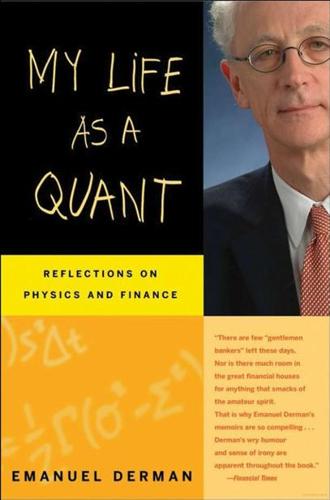
My Life as a Quant: Reflections on Physics and Finance
by
Emanuel Derman
Published 1 Jan 2004
He accomplished this by making aggressively oracular and cryptic statements on whatever topic was under discussion. To my chagrin, his senior employees evangelized about his mysterious wisdom. I recently heard Roger Lowenstein, a reporter for the Wall Street Journal and author of When Genius Failed, comment that John Meriwether "never played unless he had an edge" Downs believed he had an edge everywhere. He had to dominate every exchange. Any fact you knew, any interest you had, was a glove slap that required him to retaliate and outduel you. If Mark Koenigsberg made a remark about solving a boundary-value problem in heat conduction, Downs responded with a Southern drawl about something clever (but unrelated) he claimed to have done with Fourier analysis twenty years earlier.
…
Once his contributions were recognized, he became a professor of finance at Chicago and then at MIT, finally leaving academia for Goldman Sachs in 1984. Though Merton and Scholes had each kept at least one foot in the academic world, both of them had worked as consultants or employees of Salomon Brothers at various tinges, and in 1994, became partners and attractors of capital at LongTerm Capital Management, the leveraged hedge fund run by John Meriwether and his ex-Salomon "arb group." I noticed that the 1997 Nobel Prize citation referred only to the university affiliations of Merton and Scholes, and not to their corporate connection-perhaps the Nobel committee really did have an aversion to the business world. Though the Nobel Prize sounds as though it is awarded by the gods, committees are merely groups of people with their own preferences.
…
Kopprasch's team had written reports containing some of the best research on fixed-income derivatives in the 1980s, high quality, well-written pieces that straddled and almost dissolved the border between academia and practice. It was their publications you turned to if you wanted to understand how to value swaps and swaptions before the necessary methodology appeared in textbooks. John Meriwether's arb group at Salomon cherry-picked some of their best people from Kopprasch's team, men like Victor Haghani and Greg Hawkins, who later moved with Meriwether to Long Term Capital Management (LTCM). When I ran Goldman's Quantitative Strategies a few years later, I always regarded the work done by Kopprasch's group as a model for what I tried to achieve.
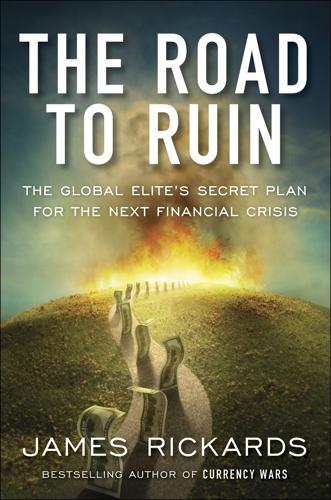
The Road to Ruin: The Global Elites' Secret Plan for the Next Financial Crisis
by
James Rickards
Published 15 Nov 2016
Knight,” Proceedings—Economic Policy Symposium—Jackson Hole, Federal Reserve Bank of Kansas City, August 25–27, 2005, accessed August 8, 2016, www.kansascityfed.org/publicat/sympos/2005/pdf/GD5_2005.pdf, 392. LTCM’s story was told in detail: Roger Lowenstein, When Genius Failed: The Rise and Fall of Long-Term Capital Management (New York: Random House, 2000). A coming-out announcement for LTCM: Saul Hansell, “John Meriwether Rides, Again, Without Salomon This Time,” The New York Times, September 5, 1993, accessed August 8, 2016, www.nytimes.com/1993/09/05/business/john-meriwether-rides-again-without-salomon-this-time.html. LTCM coinvented the sovereign credit default swap market: Gillian Tett, Fool’s Gold: The Inside Story of J. P. Morgan and How Wall St. Greed Corrupted Its Bold Dream and Created a Financial Catastrophe (New York: Free Press, 2009).
…
Major stock and bond markets around the world were hours away from collapse. The biggest banks were set to fall like dominoes starting with the perennial weak link Lehman. Investors stood to lose more in relative terms than they did in 2008. This was not reported at the time despite intense media focus on LTCM and its reclusive founder, John Meriwether. Only a few insiders at LTCM, the Fed, Treasury, and foreign finance ministries saw the whole picture and understood its significance. Elites foamed the runways and brought LTCM in for a safe landing despite four engines in flames. Global investors were inside the plane with seat belts fastened and no exit.
…
Wall Street is back to business as usual, relying on misleading models such as value at risk. The next catastrophe will be exponentially larger than the last two. The next time the world will not bounce back. The Experts I joined LTCM in February 1994 and reported to the firm’s founder, legendary bond trader John Meriwether, known as “JM.” I came on board before the fund opened for business, and remained through the collapse, rescue, and unwind until August 1999. The founding partners included two future Nobelists and other fathers of modern finance. There was never as great a collection of financial talent in one place, including universities and think tanks, as there was at LTCM.
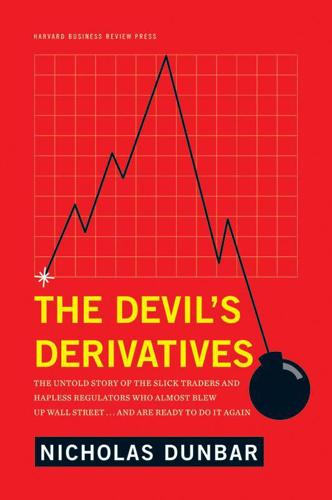
The Devil's Derivatives: The Untold Story of the Slick Traders and Hapless Regulators Who Almost Blew Up Wall Street . . . And Are Ready to Do It Again
by
Nicholas Dunbar
Published 11 Jul 2011
He: Mentored academics who further developed his theoretical mechanism, called arbitrage. Created the tools that made the mechanism feasible. Trained many of the people who went to Wall Street and implemented it. One of the MBA students who studied under Miller in the 1970s was John Meriwether, who went to work for the Wall Street firm Salomon Brothers. By the end of that decade, he had put into practice what Miller only theorized about, creating a trading desk at Salomon specifically aimed at profiting from arbitrage opportunities in the bond markets. Meriwether and his Salomon traders, together with a handful of other market-making firms, used the new futures contracts to find a mattress in securities markets that otherwise would have been too dangerous to trade in.
…
But Fitch was relying on its categories’ independence to support an investment-grade rating projecting thirty years into the future. To onlookers it appeared as if the credit police were allowing Usi to write himself a winning lottery ticket whenever he liked: he now had a two-way arbitrage machine doing for credit what John Meriwether had done for interest rates. Barclays’ trading book could now invest in assets that paid a full percentage point more than what Usi needed to pay out on the CDOs. For a $15 billion portfolio, that suggested profits in excess of $150 million per year. Usi now had to name his creations. During his English boarding school childhood, he had been assigned Latin texts by Cicero, Tacitus, and Livy and had fallen in love with ancient Rome.
…
It was the financial analogue of pricing a car according to the cost of manufacturing it, filling it with fuel, and insuring it to drive on the road. Better still, there was a built-in consistency check in the form of arbitrage. There is no reason why the price of a Toyota Prius must replicate the cost of everything that went into it. But as John Meriwether at Salomon and others demonstrated, derivatives allowed you to extract profit from the discrepancies between financial products and the raw materials used to construct them. As long as you didn’t leverage up your bets the way LTCM had, this was a very low-risk exercise and tended to push prices toward their theoretical value.
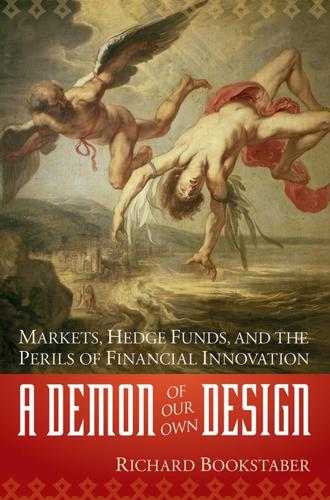
A Demon of Our Own Design: Markets, Hedge Funds, and the Perils of Financial Innovation
by
Richard Bookstaber
Published 5 Apr 2007
But when Marty called yet again to discuss the role of risk manager at Salomon, somehow I managed to say yes. In 1994, Salomon was the biggest risk-taking firm in the world. It was at the pinnacle of the bond market— even after having its wings clipped by a Treasury-auction scandal that had cost the jobs of Gutfreund, John Meriwether, and several others in senior management. The high-powered, big-brained proprietary trading group had become the envy of Wall Street. John Meriwether and the bulk of his team had just headed off to start LTCM, but the principals who remained continued to trade in the same size. And along with the pull from Marty, there was a good reason for me to look outside Morgan Stanley.
…
Every Thursday afternoon part of the conference room was cleared for a masseuse, who brought in her table and provided massages for the group. Inlaid in the center of the aisle, between the rows of desks, was a worn relic that had also adorned their area when they were on the fixed income floor: a maroon two-bythree-foot prayer carpet that John Meriwether had bought years earlier. These silly outward trappings belied the real spirit of the group: The arb unit was the most intellectually intense place I have ever run into. The lights burned a little bit brighter there. It was a concentrated remnant of the Salomon of old. Rosenbluth, a roommate of Stavis’s at the University of Pennsylvania, was by 1997 running the unit jointly with him.
…
Both outfits were famous for strategies that would bring them both to grief: relative value trades. The principals of LTCM had pulled up stakes at Salomon in 1993 and 1994 and set up shop in what became known as “Salomon North” in Greenwich, Connecticut. The original fixed income arbitrage group had been founded in the mid1980s by John Meriwether, who was forced out of the firm to make peace with the Federal Reserve after the 1991 Treasuries scandal. Meriwether & Co. landed at LTCM largely intact, a cadre of MIT-trained professionals, many with PhDs and former careers as university professors. Meriwether 100 ccc_demon_097-124_ch06.qxd 7/13/07 2:43 PM Page 101 LT C M R I D E S THE LEVERAGE CYCLE TO HELL has been celebrated for his coolness under pressure, but that is not an uncommon trait among top traders.
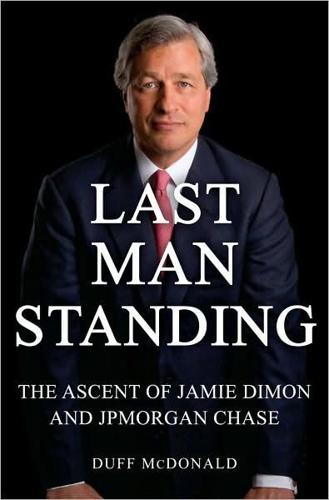
Last Man Standing: The Ascent of Jamie Dimon and JPMorgan Chase
by
Duff McDonald
Published 5 Oct 2009
A scathing 1995 piece by Suzanna Andrews in New York magazine made the case that Maughan had been in over his head at Salomon yet had a tendency to say things like, “I am the hardest-working man at Salomon Brothers.” Most top executives also thought he put politics ahead of the interests of the firm, a conclusion arrived at after he seemingly forced the star trader John Meriwether out of Salomon—Meriwether had gone on to found Wall Street’s hottest hedge fund at the time, Long-Term Capital Management. A stream of talented partners had also left during Maughan’s tenure. Then there was the issue of Maughan’s wife, Va. A onetime Pan Am reservation agent who had changed her name from Lorraine Hannemann, Va Maughan was a gossipmonger’s dream.
…
But in the spring of 1998, it began suffering increasingly frequent losses as the markets remained skittish and relatively illiquid. By the end of April, in fact, it had already lost $200 million for the year. Although Salomon had for years delivered outsize profits on its arbitrage bets, Dimon and Weill began to sense that maybe the jig was up. With a number of defections from Salomon, most prominently John Meriwether and his team at the powerful hedge fund Long-Term Capital Management, other firms were using similar if not identical strategies, with the inevitable result that the arbitrage opportunity was shrinking. This, in turn, meant that the risk-return trade-off on the unit’s big bets was heading in the wrong direction.
…
(LTCM, in fact, was jokingly referred to by the Travelers crowd as “Salomon North.”) Long-Term Capital Management wasn’t just any old hedge fund. Through the magic of leverage, it had turned $5 billion of capital into a $100 billion giant, and its sudden shakiness posed a threat to the entire market. John Meriwether, the head of LTCM, called Dimon on August 25, proposing that instead of continuing to sell its positions, Dimon might continue combining the remnants of Salomon’s arbitrage group with LTCM. He was rebuffed, in part because Sandy Weill wasn’t partnering with any hedge funds, let alone the teetering LTCM.
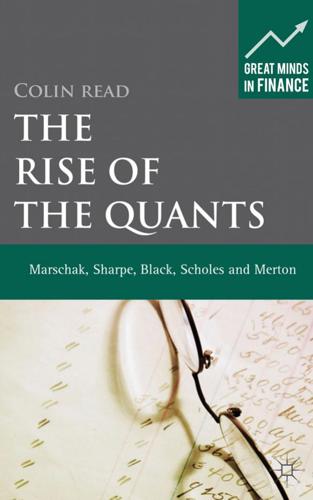
The Rise of the Quants: Marschak, Sharpe, Black, Scholes and Merton
by
Colin Read
Published 16 Jul 2012
Scholes had intimate access to the world’s best stock price database and could thus test the efficiency of real markets as benchmarked against the predictions of his theories. Merton and Scholes collaborated on some of these studies, especially following Scholes’ return to the Sloan School. Both Merton and Scholes also supervised graduate students and consulted with mutual fund and investment houses part time. On many occasions, they had the chance to work with John Meriwether, the influential and successful investment director of Salomon Brothers, a significant employer of MIT finance graduates. The investment house’s proprietary algorithms for the trading of fixed-income securities employed Black-Scholes-Merton models that had been modified and extended in-house to earn arbitrage profits for Salomon Brothers.
…
I said, ‘Wait a minute, that’s a big engine there,’ and before I knew it he had laid rubber, hit a curb and landed in my neighbor’s yard in a mangled heap.’’5 The 1998 ignoble experience A few years before their shared Nobel Prize, both Merton and Scholes reunited once again over a new investment house opportunity. In 1993 John Meriwether, the Salomon Brothers investment guru who had left his employer a couple of years earlier, got together with two investor colleagues, Eric Rosenfeld and James McEntee, and formulated a scheme for a new type of investment house. They asked Merton to join them. Soon, a number of Salomon Brothers traders, analysts, advisors, and directors had also been enlisted, including Scholes.
…
The talk resulted in an offer by AIG, Goldman Sachs, and Berkshire Hathaway to buy out the partners of Long Term Capital Management for $250 million and inject an additional $3.75 million into the fund, which they proposed would be absorbed into the Goldman Sachs trading department. The Nobel Prize, Life, and Legacy 171 The group gave John Meriwether and Long Term Capital Management an hour to decide whether they would accept the offer the New York Fed thought they could not refuse. The company’s principals let the offer lapse because they felt the firm was worth at least $4.7 billion. Instead, the New York Fed organized a $3.625 billion bailout not so much to save the company but to avoid the collapse of other companies related to the fund.
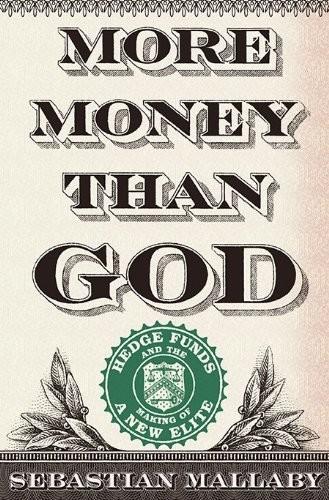
More Money Than God: Hedge Funds and the Making of a New Elite
by
Sebastian Mallaby
Published 9 Jun 2010
There, above the fold, the Journal reported their decision to return two fifths of their fund’s capital, $2.7 billion, to outside investors. In the new world of soaring leverage, Long-Term Capital had no need for so much client cash. By boosting its borrowing, it could maintain its towering portfolio on a thinner foundation. It could be ambitious and slender, like an I. M. Pei creation.2 Long-Term Capital Management’s founder, John Meriwether, had been one of the first executives on Wall Street to see the potential in financial engineering. As a rising star at Salomon Brothers in the mid-1980s, he had set out to transform the small trading group he managed into “a quasi-university environment.”3 Meriwether’s plan was to hire young stars from PhD programs and encourage them to stay in touch with cutting-edge research; they would visit finance faculties and go out on the academic conference circuit.
…
In emerging markets, LTCM had constructed essentially the same trade: It shorted relatively stable bonds and owned risky ones, and again it lost badly. By the end of that Friday, Long-Term had lost a total of $550 million, 15 percent of its capital.30 It was the middle of August, and most of Long-Term’s senior partners were enjoying the vacation they had deferred earlier in the summer. John Meriwether was in China. Eric Rosenfeld was in Idaho. LTCM’s counsel, Jim Rickards, was with his family in North Carolina. The skeleton crew in Greenwich stared at the trading screens in wonder. It was not just money that was going up in smoke. Long-Term’s confident assumptions were burning too; it was a bonfire of the fund’s own vanities.
…
On the other hand there is a darker view—that sophisticated traders lack the muscle to enforce price efficiency and that, knowing the limits of their power, they will prefer to ride trends rather than fight them. Among the hedge funds we have encountered, there are examples of both schools. Long/short investors, from A. W. Jones in equities to John Meriwether in bonds, aim to buy underpriced securities and sell expensive ones, pushing prices to their efficient level. Meanwhile, trend followers such as Paul Tudor Jones make no claim to understand the fundamental value of anything they trade. They buy securities as they go up and dump them as they go down.
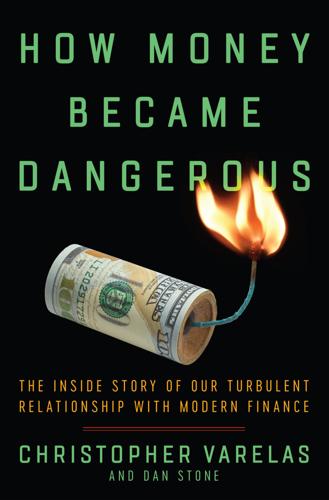
How Money Became Dangerous
by
Christopher Varelas
Published 15 Oct 2019
He got away with it for a while, until a few Salomon customers noticed that their names had been used to buy government securities, even though they couldn’t recall having approved the purchases—not too dissimilar to the 2016 Wells Fargo scandal in which accounts were opened under customers’ names without their knowledge in order to meet quotas. In April 1991, Mozer confessed to his mentor, famed trader John Meriwether, that he had messed with a securities auction. Meriwether brought the bad news to Salomon’s legendary CEO John Gutfreund (pronounced “good friend”), who shared it only with the firm’s president, Tom Strauss, and general counsel, Don Feuerstein. Normally, if a violation of this magnitude were uncovered, senior management would call an emergency board meeting and immediately self-report to the Securities and Exchange Commission to save the firm and their own skin, hanging the violator out to dry.
…
Women’s Wear Daily dubbed the couple “Social Susie” and “Solemn John.” Although Gutfreund had an office, he rarely used it. He preferred to be in the action. So he kept a desk out on the trading floor, and it was my good luck to be stationed next to him—and not far from another Salomon Brothers powerhouse, John Meriwether—after the head of recruiting decided the summer associates needed home locations when not observing a specific trader. I knew of Gutfreund’s famous advice to rookie traders—to wake up each morning “ready to bite the ass off a bear”—and I was eager for him to toss some similar scraps of wisdom my way, but he never spoke to me that summer except once, when he handed me an annual report he had finished reading and said I should check it out.
…
Or perhaps Mozer’s actions were a result of Salomon’s freewheeling culture, which espoused the belief that it’s better to beg forgiveness than to ask permission—he may have imagined that he would be pardoned and possibly even rewarded for maximizing profits and exposing this weakness in the system. Or there might have been another factor, dating back to Mozer’s transfer to the government bond desk in 1983 and his history with John Meriwether. Meriwether was one of the most powerful people at the firm, vice chairman of the board and the head of the high-stakes proprietary trading operation. While most salesmen and traders worked for the clients and collected commissions on those deals, Meriwether and his proprietary traders used the firm’s own capital to take positions on behalf of the firm.
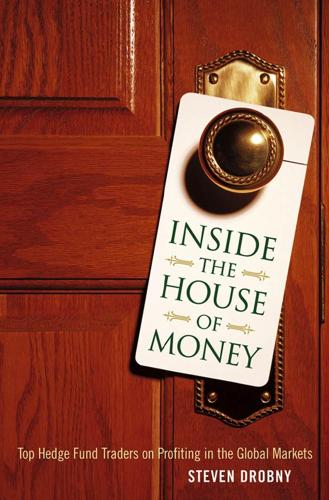
Inside the House of Money: Top Hedge Fund Traders on Profiting in a Global Market
by
Steven Drobny
Published 31 Mar 2006
Also, we made a tremendous amount of money that year and I won the bet just before bonuses were paid, which helped. It sounds like you were somewhat influenced by John Meriwether on that bet except that you learned from John Gutfreund’s mistake and put a cap on it! Exactly, it was my Liar’s Poker moment. What market books do you recommend to your junior traders? I’m a semiproponent of the Chartered Financial Analyst (CFA) program, simply because I believe it’s a good program that covers all areas of finance. 159 THE TREASURER LIAR’S POKER JOHN GUTFREUND: “One hand, one million dollars, no tears.” JOHN MERIWETHER: “No John, if we’re going to play for those kind of numbers, I’d rather play for real money.
…
For one, the arbitragefocused fund drifted into global macro trades and its subsequent unwind had ramifications for global macro markets.Two, it offers insights into what can go wrong at a hedge fund, as well as shed light on such important issues as liquidity, risk management, and correlations. And three, almost every interviewee in this book mentions LTCM. LTCM was started in 1994 by infamous Salomon Brothers proprietary trader John Meriwether, who hired an all-star cast of financial minds including former Fed vice chairman David Mullins and Nobel Prize winners Robert Merton and Myron Scholes (pioneers in option pricing theory and methodology). LTCM started with $1.3 billion in assets from a who’s who list of investors and initially focused on fixed income arbitrage opportunities (which had become more attractive as spreads widened after the bond market rout of 1994).
…
While his style may require a lot of reading and research on individual companies before finally selecting the stocks he will use to express his larger macro views, one particular story drives home the point that he is not a classic equity fund manager, but rather a trader first and foremost. While at golf school in Florida shortly after the meltdown of Long Term Capital Management in 1998, Bessent found himself teamed up with John Meriwether of LTCM infamy. The golf coach paired the two, reasoning, “You guys do the same thing.” Bessent replied, “No we don’t—when a trade goes against John, he adds.When a trade goes against me, I cut.” How did you become a global macro hedge fund manager? I was a liberal arts major at Yale and wanted to become a journalist.
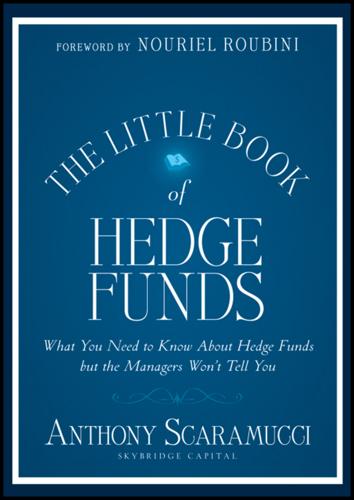
The Little Book of Hedge Funds
by
Anthony Scaramucci
Published 30 Apr 2012
And Now for the Not-Quite-as-Successful By the mid-90s, it appeared that hedge funds had found the Shangri-La of investments. But just as they were about to meet the leprechaun and his pot of gold at the end of the rainbow, it happened—Long-Term Capital Management (LTCM) collapsed in 1998 and was later rescued by the federal government. Founded in 1994 by a proprietary trading legend, John Meriwether from Solomon Brothers; two Nobel Prize-winning economists, Robert C. Merton and Myron Scholes; and a slew of finance wizards, LTCM used an arbitrage strategy that exploited temporary changes in market behavior. By pair trading and betting on price convergence over a range of scenarios (we’ll discuss those strategies in Chapter 7), the LTCM band of brothers leveraged their $4 billion fund until it had a notional exposure of over $1 trillion dollars.
…
Thus, the goal of the alpha-seeking manager is to always manage the downside while making sure money can get made with a touch of diversification, reduced volatility, and risk. A Word of Caution In the 1980s, Long-Term Capital Management (along with its legendary credit arbitrageur leader, John Meriwether) was one of the first hedge funds to quantify the estimate of the correlations among various trades and mathematically measure risk through a technique known as “value at risk.” Although we learned of LTCM’s eventual demise caused by hubris in Chapter 2, Meriwether, Robert Merton, and Myron Scholes helped facilitate the correlation model.
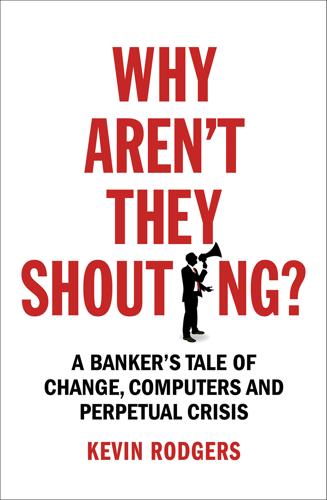
Why Aren't They Shouting?: A Banker’s Tale of Change, Computers and Perpetual Crisis
by
Kevin Rodgers
Published 13 Jul 2016
But LTCM wasn’t just large – it was regarded as the fund housing the smartest guys in the market. If they were doing a trade, banks wanted to know about it because the information gleaned from seeing how LTCM was dealing could help the banks’ own positioning. At least, that was the theory. LTCM had been set up in late 1993 by a man named John Meriwether who had been the head of the single most profitable trading desk in the single most profitable investment bank in the world – Salomon Brothers. The desk was called the arbitrage (or ‘arb’) desk and was legendary both inside and outside Salomon. My wife, who worked at Salomon for a few years prior to the arrival of our baby son Fred in 1995, recalls a trader, on a desk separate from the arb desk (and far less glamorous), telling her that he was copying one of their trades.
…
Over the course of the month, for example, the Dow dropped 19 per cent in several sickening plunges. Rumours then began to circulate that LTCM, the arrogant, computerised market gorilla, was in trouble. On 2 September, the rumours were confirmed. In a letter to investors that was leaked to Bloomberg, John Meriwether announced that the fund had lost 44 per cent of its capital in August alone21 – a cool $1.9 billion. ‘Jesus,’ said Roz when the news hit the wires, ‘I thought they were an arbitrage fund?’ It was, indeed, shocking. With a VaR of $100 million, according to the maths this loss should never have happened – it was statistically impossible.
…
., p12. 14 ‘Key Indicators of Developing Asian and Pacific Countries’, published by the Asian Development Bank online at adb.org. 15 ‘The Asian Crisis: Causes and Cures’, IMF Staff in Finance and Development, June 1998, http://www.imf.org/external/pubs/ft/fandd/1998/06/imfstaff.htm 16 ‘Global Development Finance, Analysis and Summary Tables’, World Bank, May 2000, Table 2.1, http://siteresources.worldbank.org/INTPROSPECTS/Resources/334934-1325713584429/8351805-1325714533083/GDF2000CH2.pdf 17 Author’s calculations using data from Pacific Exchange Rate Service, University of British Columbia, Saunder School of Business, http://fx.sauder.ubc.ca/data.html 18 Ibid. 19 US Energy Information Administration, http://www.eia.gov/dnav/pet/hist/LeafHandler.ashx?n=PET&s=RWTC&f=D 20 Central Bank of Russia statistics website, http://www.cbr.ru/eng/statistics/print.aspx?file=b_sector/interest_rates_98_e.htm&pid=procstavnew&sid=svodProcStav 21‘An Historical Document: Long-Term Capital Management CEO John Meriwether Asks for Money’, Grasping Reality with the Invisible Hand, http://delong.typepad.com/sdj/2005/06/an_historical_d.html 22 ‘Long-Term Capital Management, Report to Congressional Requesters’, United States General Accounting Office, October 1999, http://www.gao.gov/assets/230/228446.pdf Chapter 6 1 ‘Weather risk market remains buoyant, claims Clemmons’, Paul Lyon, Risk.net, 24 October 2002, http://m.risk.net/risk-magazine/news/1503229/weather-risk-market-remains-buoyant-claims-clemmons 2 Presentation to Merrill Lynch European Banking & Insurance Conference London, Anshu Jain, 8 October 2002, https://www.db.com/ir/en/download/1382.pdf 3 Stern Business School, NYU, datasets, http://pages.stern.nyu.edu/~adamodar/New_Home_Page/datafile/histretSP.html 4 US Treasury data, http://www.treasury.gov/resource-center/data-chart-center/interest-rates/Pages/Historic-LongTerm-Rate-Data-Visualization.aspx 5 2015 Investor Company Handbook, Investment Company Institute, May 2015, Chapter 2, http://www.icifactbook.org/fb_ch2.html#popularity 6 ‘Studies on Stock and Bond Picking Performance’, Mark Hebner, Index Fund Advisors, May 2013, https://www.ifa.com/articles/studies_on_stock_picking_performance/ 7 ‘Speculators Have Discovered Palladium and Sugar’, William Baldwin, Forbes, March 2011, http://www.forbes.com/forbes/2011/0411/investing-william-baldwin-investment-strategies-palladium-sugar.html 8 Presentation to Merrill Lynch European Banking & Insurance Conference London, Anshu Jain, 8 October 2002, Slide 17, https://www.db.com/ir/en/download/1382.pdf 9 Ibid., Slide 14. 10 Market Surveys Data, 1987–2010, ISDA, 2010, http://www.isda.org/statistics/pdf/ISDA-Market-Survey-annual-data.pdf 11 ‘Introducing CCOs’, Credit magazine, February 2005, http://www.risk.net/credit/feature/1510254/introducing-ccos 12 ‘CDO Evaluator Applies Correlation and Monte Carlo Simulation to the Art of Determining Portfolio Quality’, Sten Bergman, Standard and Poor’s, 12 November 2001, http://www.globalriskguard.com/resources/crderiv/sp_portf_qual.pdf 13 ‘“The Formula That Killed Wall Street”?
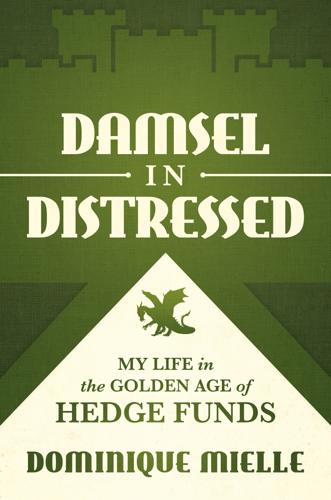
Damsel in Distressed: My Life in the Golden Age of Hedge Funds
by
Dominique Mielle
Published 6 Sep 2021
The biggest hedge fund at the time, Long-Term Capital Management, heavily involved in the Russian treasury bond market and leveraged over twenty times, was hemorrhaging almost $4 billion in losses and facing the unthinkable: bankruptcy. The fund’s prospective failure could be so perilous to global financial markets and investors worldwide that it had to forcefully be gobbled up by another hedge fund in a deal hastily arranged by the Federal Reserve Bank. The head of Long-Term Capital, John Meriwether, had been a legend. The “Bond King,” they called him. He was the hero of Michael Lewis’s wonderful book Liar’s Poker, the stuff that every pubescent girl aspiring to be a big deal in finance looks up to. One could say that Meriwether was caught up in a low-probability, high-consequence sequence of events.
…
That there isn’t a Robespierre out there demanding managers’ heads on a spike is astounding. Tales of Excess The other day, I reread Liar’s Poker by Michael Lewis, the story of Salomon Brothers in the ’80s, detailing the feud between the head of corporate finance, John Gutfreund, and the head of sales and trading, John Meriwether. It was thirty years ago. Still a great read for the drama, but the numbers seem positively quaint. Gutfreund made $40 million from the sale of Salomon Brothers and paid himself $3 million. Three million? It sounds like Dr. Evil demanding a million-dollar ransom in Austin Powers. By today’s standards, these numbers are off by a factor of a hundred.
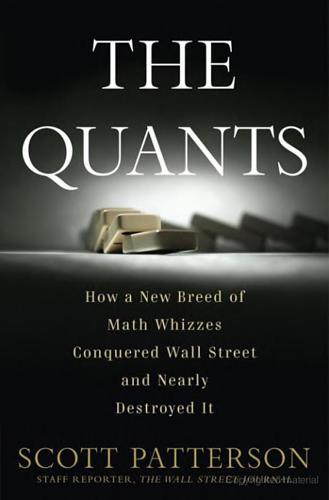
The Quants
by
Scott Patterson
Published 2 Feb 2010
It was a sleepy business, and few traders even knew what they were or how to use the exotic swaps—or had any idea that they represented a new front in the quants’ ascendancy over Wall Street. Indeed, they would prove to be one of the most powerful weapons in their arsenal. The quants were steadily growing, moving ever higher into the upper echelons of the financial universe. What could go wrong? As it turned out, a great deal—a four-letter word: LTCM. In 1994, John Meriwether, a former star bond trader at Salomon Brothers, launched a massive hedge fund known as Long-Term Capital Management. LTCM was manned by an all-star staff of quants from Salomon as well as future Nobel Prize winners Myron Scholes and Robert Merton. On February 24 of that year, the fund started trading with $1 billion in investor capital.
…
Say the last bet was twelve 9s. If the bills did in fact have twelve 9s, the trader who called would have to pay everyone. If the bills didn’t have twelve 9s, the trader who made the bet paid up. In Lewis’s book, the game involved Salomon chairman John Gutfreund and the firm’s star bond trader John Meriwether, future founder of the doomed hedge fund LTCM. One day, Gutfreund challenged Meriwether to play a $1 million hand of Liar’s Poker. Meriwether shot back: “If we’re going to play for those kind of numbers, I’d rather play for real money. Ten million dollars. No tears.” Gutfreund’s response as he backed away from Meriwether’s bluff: “You’re crazy.”
…
Fama and French cranked up: The paper was called “The Cross Section of Expected Stock Returns,” published in the June 1992 edition of Journal of Finance. One day in the early 1980s: Nearly all of the details of Boaz Weinstein’s life and career come from interviews with Weinstein and people who knew and worked with him. In 1994, John Meriwether: A number of details of LTCM’s demise were taken from When Genius Failed: The Rise and Fall of Long-Term Capital Management, by Roger Lowenstein (Random House, 2000), and Inventing Money: The Story of Long-Term Capital Management and the Legends Behind It, by Nicholas Dunbar (John Wiley & Sons, 2000). 6 THE WOLF On a spring afternoon in 1985: The Liar’s Poker account is taken from The Poker Face of Wall Street, by Aaron Brown (John Wiley & Sons, 2006), as well as interviews and email exchanges with Brown.

Extreme Money: Masters of the Universe and the Cult of Risk
by
Satyajit Das
Published 14 Oct 2011
Even if the hedge fund failed, banks made money buying the positions at distressed prices. Banks provided a true cradle-to-grave service for hedge funds. In the Long Run, We Are All Dead LTCM was known as Salomon North, reflecting its Greenwich, Connecticut base. After leaving Salomon Brothers in 1991 following a trading scandal, John Meriwether established LTCM in 1994 with capital of $4 billion. Investors paid a 2 percent management fee and 25 percent incentive fee on earnings after a threshold level of return. The operation sought to replicate Salomon Brothers’ successful fixed income arbitrage unit. Joining Meriwether were key Salomon traders Eric Rosenfield, Lawrence Hilibrand, Victor Haghani, and Greg Hawkins.
…
On August 21, LTCM lost $550 million, mainly on its credit spread and equity volatility positions. LTCM needed cash to cover losses. The unflappable Meriwether advised that: “we’ve had a serious markdown but everything’s fine with us.”27 LTCM discovered what John Maynard Keynes knew: “the market can remain irrational longer than you can remain solvent.”28 On September 2, 1998 John Meriwether advised investors that LTCM had lost 52 percent of its value: As you are all too aware events surrounding the collapse of Russia caused large losses and dramatically increased volatility in global markets.... Many of the fund’s investment strategies involve providing liquidity to the market.
…
Before the crisis, when asked about John Paulson, a banker at Goldman Sachs told a potential investor that he was “a third rate hedge fund guy who didn’t know what he was talking about.”18 One person noted: “In the hedge-fund industry the only bad thing you can do is lose people’s money.”19 Even that wasn’t strictly speaking true. In 1999, after the collapse of LTCM, John Meriwether had no difficulties raising new funds for JWM Partners LLC (JWM), a lower risk version of LTCM. In 2008 the $2.3 billion JWM fund found itself in trouble. In a familiar message, Meriwether told investors: “We have sharply reduced the risk and balance sheet of the portfolio.” JWM closed its main fund after losing 44 percent between September 2007 and February 2009.20 Subsequently, in 2010, Meriwether opened his third hedge fund venture—JM Advisors Management.

Traders, Guns & Money: Knowns and Unknowns in the Dazzling World of Derivatives
by
Satyajit Das
Published 15 Nov 2006
LTCM is a story of the confluence of many divergent trends – quantitative finance, risk modelling and derivatives trading. Naturally, it is also about the staples of financial markets – fear and greed. LTCM was a hedge fund based in Greenwich, Connecticut, USA. The fund was formed in 1994 by a group of ex-Salomon Brothers traders led by John Meriwether. The key principals (in addition to Meriwether) included DAS_C06.QXP 8/7/06 168 4:43 PM Page 168 Tr a d e r s , G u n s & M o n e y Eric Rosenfield, Lawrence Hilibrand, William Krasker, Victor Haghani, Greg Hawkins and David Modest. LTCM principals included Nobel Prize winners Robert Merton and Myron Scholes and former regulators including ex-Federal Reserve Board Vice Chairman David Mullins.
…
Equity markets became more volatile. LTCM appears to have lost DAS_C06.QXP 8/7/06 4:43 PM Page 173 5 N The perfect storm – risk mismanagement by the numbers 173 around $550 million on 21 August alone. The losses related to its credit spread and equity volatility positions. On 2 September 1998, John Meriwether issued a letter to investors that revealed LTCM had lost 52% of its value. ‘As you are all too aware events surrounding the collapse of Russia caused large losses and dramatically increased volatility in global markets . . . Many of the fund’s investment strategies involve providing liquidity to the market.
…
Critics now suggested that perhaps they should have focused on a specific Greek word – ‘hubris’, meaning overconfidence or insolent pride. Endgame The banks worked with the LTCM principals to gradually liquidate the portfolio over about a year and were paid back ahead of schedule. Subsequently, John Meriwether established a new hedge fund (JWM Associates), although not many of the original principals followed him to his new venture. Scholes set up a separate hedge fund with some of the LTCM gang. After the fall, the principals grizzled about the cynical way that the dealers had used conditions to rip LTCM apart – it was sour grapes.
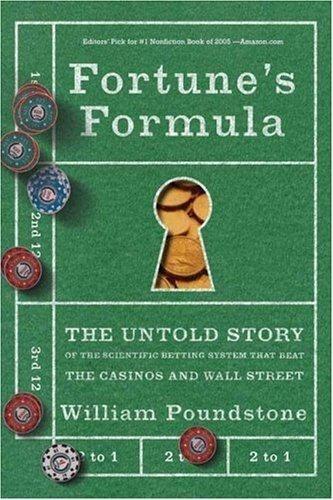
Fortune's Formula: The Untold Story of the Scientific Betting System That Beat the Casinos and Wall Street
by
William Poundstone
Published 18 Sep 2006
“You’re all right,” Salerno said. “You’re the only guy on Wall Street who’s not a rat.” “But I don’t know anything,” Mulheren insisted. “I don’t have anything bad to tell them.” “Oh, yeah,” Salerno said, rolling his eyes. “Right.” PART SIX Blowing Up Martingale Man GAMBLING RAN IN John Meriwether’s family. As a boy, he learned blackjack from his grandmother and was permitted to place bets at the racetrack and on sports. Always looking for an edge, John would check the weather forecast for wind velocity at Wrigley Field and use that to decide how to bet on Cubs games. Born in Chicago in 1947, Meriwether was a bright, mathematically inclined kid educated by priests.
…
In a world where return is so highly valued, people will always be tempted to venture out onto the precipice. The Kelly criterion tells exactly how far a trader can go before tumbling into the abyss. Mean-variance analysis and VaR do not. In the most direct human terms, LTCM’s problem was group-think. Under John Meriwether, there was an organizational culture in which questions of risk were pressed only so far. This appears to have led to systematically rosy projections. Too little of the fund’s brainpower went to skeptical probing of what could have gone wrong. LTCM goofed by greatly underestimating the chance of a panic in which its trades would become highly correlated.
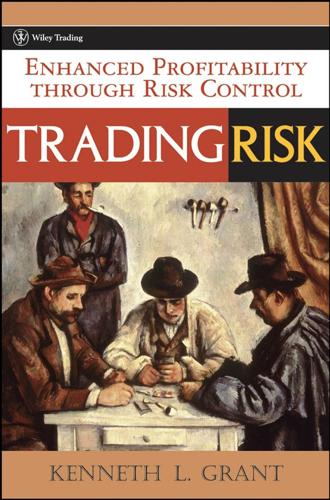
Trading Risk: Enhanced Profitability Through Risk Control
by
Kenneth L. Grant
Published 1 Sep 2004
After all, I was managing risk at a hedge fund of similar focus (if more discipline), whose wings also got singed a bit in the cross fire of these events but who rose to much greater heights in their aftermath. Bringin’ It on Home 229 Besides, the topic is simply too juicy to resist. I don’t know of anyone I’ve ever encountered in the financial services industry that did not have great admiration for the LTCM team. Its leader John Meriwether, is responsible for dramatic advancements in the field of relative value fixed income trading—a strategy that many (including this reporter) believe to be both viable and vital to this day. My own personal case of blind devotion, deriving largely from my status as a wanna-be academic, was and still is skewed towards Robert Merton and Myron Scholes, whose contributions to the world of modern financial engineering speak for themselves, and need no particular embellishment from yours truly.
…
The story of how it all came crashing down—how this group managed first to practically corner the market on an unimaginable array of global securities; then to watch helplessly, unable to liquidate, as this portfolio dropped billions in value over a matter of days (in the process nearly taking down a good portion of the world’s leading capital markets institutions); and ultimately to create a situation that required government intervention to avert a global market crisis—is a matter of prolific public record. However, there are some mouthwatering tidbits here, so bear with me for a few more paragraphs, and you’ll not be sorry. For the uninitiated, Long-Term Capital Management was a hedge fund concern created by John Meriwether (former vice chairman of Salomon Brothers). LTCM applied the trading techniques that (to give the man his props) JM had pioneered, this time in a private funding vehicle, where he wouldn’t have to be bothered by issues like regulatory oversight and shareholder concern about earnings volatility.
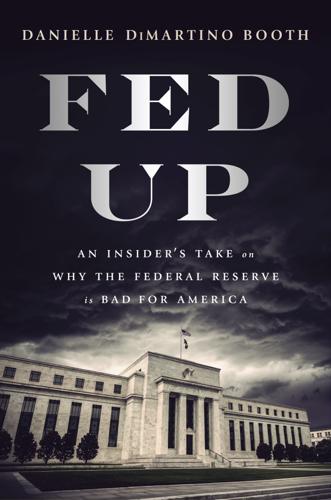
Fed Up: An Insider's Take on Why the Federal Reserve Is Bad for America
by
Danielle Dimartino Booth
Published 14 Feb 2017
Words like “slightly” and “moderately” in Fedspeak did not mean the same thing. Every nuance mattered. Two years after I arrived in New York, tremors shook the markets when the hedge fund Long-Term Capital Management (LTCM) shocked the Street by declaring it was on the verge of insolvency. The brainchild of John Meriwether, former head of bond trading at Salomon Brothers, LTCM was launched in February 1994 with $1.25 billion in capital and a cadre of hotshots who built financial models that would take bond arbitrage to never-before-seen heights of profitability. Meriwether hired PhD economists David Mullins, former vice chairman of the Federal Reserve, and Robert C.
…
How do we know when irrational exuberance: FRB: Alan Greenspan, “Central Banking in a Democratic Society” (speech, American Enterprise Institute for Public Policy Research, Washington, DC, December 5, 1996), www.federalreserve.gov/boarddocs/speeches/1996/19961205.htm. He had adopted the maxim: FRBD: Mark Wynne, “How the FOMC Talks” (speech, Sul Ross University, Alpine, Texas, October 29, 2014), www.dallasfed.org/assets/documents/educate/events/2014/14summit_wynne.pdf. The brainchild of John Meriwether: Stephanie Yang, “The Epic Story of How a ‘Genius’ Hedge Fund Almost Caused a Global Financial Meltdown,” BusinessInsider Singapore, July 11, 2014. As markets sank, the hedge fund lost $2 billion: Ibid. At least $1 trillion was at risk: Ibid. The heads of more than a dozen: Michael Fleming and Weiling Lui, “Near Failure of Long-Term Capital Management,” Federal Reserve Bank of New York, Federal Reserve History, September 1998, www.federalreservehistory.org/Events/DetailView/52.
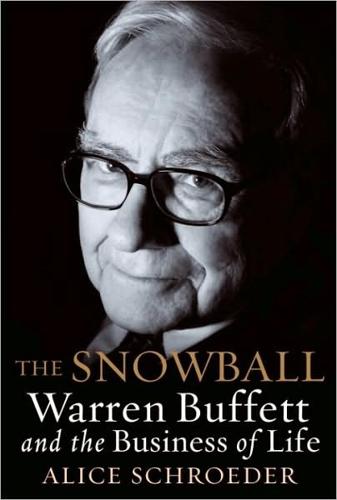
The Snowball: Warren Buffett and the Business of Life
by
Alice Schroeder
Published 1 Sep 2008
Already fragmented into disparate power bases, Salomon now evolved into a system of warlords: a corporate-bond warlord, a government-bond warlord, a mortgage-bond warlord, an equities warlord.36 One ruled above them all: the warlord of bond arbitrage, a soft-spoken, brilliant mathematician, the forty-year-old John Meriwether. The shy, self-effacing “J.M.,” a former PhD candidate, expressed his outsize ambitions through a team of professors he had lured with Wall Street salaries from schools like Harvard and MIT. These “arb boys” hunched protectively over their computers, fiddling with mathematical models portraying the bond universe, an oasis of intellect amid the belching, sweating traders, who more often swung from their gut.
…
14 When pressed, Feuerstein gave Munger a much fuller description of events, similar to what Corrigan had been told.15 As Feuerstein recounted, Mozer had gotten a letter from the Treasury Department in April saying they were investigating one of his bids.16 Realizing that the game was up, on April 25 he had gone to his boss, John Meriwether, and made a confession of sorts. In February, to get around the thirty-five percent limit, he had not only bid in Salomon’s name, he had also submitted phony bids under real customers’ names.17 Mozer swore to Meriwether that this was the only time, and he would never do it again. Meriwether had recognized immediately that this was “career-threatening,” had said so to Mozer, and had reported the situation to Feuerstein and Strauss.
…
If Salomon went down afterward, he would be even more closely associated with shame and disaster. But if there was anybody who could get himself and the other shareholders out of this mess, he was that person. To do so he would have to extend the umbrella of his reputation, already at risk, even further to protect the firm. There was no way to avoid this challenge. Deryck Maughan and John Meriwether could not do it. He could not send somebody from Munger, Tolles, or Charlie Munger, or Tom Murphy, or Bill Ruane. He could not solve it by passing an idea along to Carol Loomis for an incisive article in Fortune. Even Big Susie could not solve this. For once, nobody could be his proxy. Only he could save Salomon.
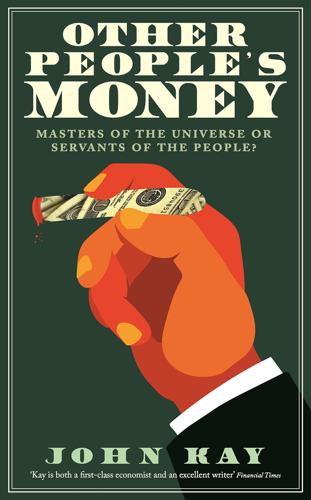
Other People's Money: Masters of the Universe or Servants of the People?
by
John Kay
Published 2 Sep 2015
Arbitrage involves taking matched positions – buying one security, selling another, when the price differential moves outside its normal range. Such arbitrage strategies were widely used by Long-Term Capital Management, the hedge fund that collapsed spectacularly in 1998. LTCM, best known for its association with the two Nobel Prize-winning economists Robert Merton and Myron Scholes, was founded by John Meriwether, who had headed the trading operations of Salomon Bros in the 1980s (those described by Michael Lewis in his book Liar’s Poker) which pioneered the explosive growth of FICC trading. The fund was largely staffed by his former colleagues, and insiders often described it as ‘Salomon North’. In the end, the LTCM trades were settled profitably by the investment banks which had taken them over: a telling illustration of Keynes’s (possibly apocryphal) dictum that ‘markets can remain irrational for longer than you can stay solvent’.4 More recently, the mathematical analysis of trading patterns has enabled some algorithmic traders to make returns from minute movements in the prices of securities.
…
Salomon Bros, which had done so much to promote the rise of the trading culture, became part of Citigroup; Warburg, the City of London’s most innovative investment bank, was acquired by UBS. Retail banks such as Barclays and J.P. Morgan developed their investment banking activities. Some smaller investment banks, such as Lazards, withdrew into specialist niches, while John Meriwether – Lew Ranieri’s boss at Salomon – founded his own firm: Long-Term Capital Management. Fig. 3: Annualised shareholder returns of major banks, August–August (per cent per annum) Total shareholder return (including dividends) *Composed of large and mid-cap stocks across twenty-three developed markets.

The Ascent of Money: A Financial History of the World
by
Niall Ferguson
Published 13 Nov 2007
They also needed a great deal of computing power, a force which had been transforming the financial markets since the early 1980s. All they required now was a partner with some market savvy and they could make the leap from the faculty club to the trading floor. Struck down by cancer, Fisher Black could not be that partner. Instead, Merton and Scholes turned to John Meriwether, the former head of the bond arbitrage group at Salomon Brothers, who had made his first fortune out of the Savings and Loans meltdown of the late 1980s. The firm they created in 1994 was called Long-Term Capital Management. It seemed like the dream team: two of academia’s hottest quants teaming up with the ex-Salomon superstar plus a former Federal Reserve vice-chairman, David Mullins, another ex-Harvard professor, Eric Rosenfeld, and a bevy of ex-Salomon traders (Victor Haghani, Larry Hilibrand and Hans Hufschmid).
…
Suddenly all the different markets where Long-Term had exposure were moving in sync, nullifying the protection offered by diversification. In quant-speak, the correlations had gone to one. By the end of the month, Long-Term was down 44 per cent: a total loss of over $1.8 billion.94 August is usually a time of thin trading in financial markets. Most people are out of town. John Meriwether was on the other side of the world, in Beijing. Dashing home, he and his partners desperately sought a white knight to rescue them. They tried Warren Buffett in Omaha, Nebraska - despite the fact that just months before LTCM had been aggressively shorting shares in Buffett’s company Berkshire Hathaway.
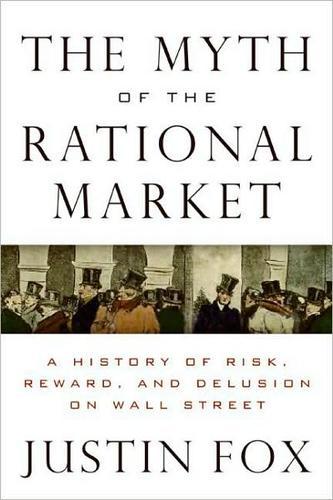
The Myth of the Rational Market: A History of Risk, Reward, and Delusion on Wall Street
by
Justin Fox
Published 29 May 2009
When Eugene Fama and Kenneth French published their research on the outperformance of value stocks, Sinquefield and Booth (who in 2008 gave $300 million to the Chicago Business School, which was renamed in his honor) signed them up as advisers and launched a value fund that was hard to distinguish from the value funds run by efficient market nonbelievers. The most fascinating case was that of Robert Merton and Myron Scholes. In the 1980s, a spectacularly successful proprietary trading operation emerged at the bond brokerage Salomon Brothers. At its head was Chicago MBA John Meriwether, who assembled a team of traders and quants led by one of the best Ph.D. students Merton ever taught, Eric Rosenfeld. The approach was similar to Ed Thorp’s, but with bonds instead of stocks and a lot more swashbuckling. Rosenfeld lured Merton on board in 1988 as a “special consultant to the Office of Chairman.”
…
The hedge fund had grown out of the proprietary trading desk at Salomon Brothers, and signed up Robert Merton and Myron Scholes as partners. It followed the approach of quantitative pioneer Ed Thorp: Find two securities that by all rights ought to be traveling in the same direction but weren’t, and bet that they would converge. A longtime favorite of LTCM chief John Meriwether was the off-the-run treasury trade. Brand-new thirty-year treasuries often sold at markedly higher prices than identical securities issued six months before. When that happened, LTCM sold the new treasuries short, bought the “off-the-run” treasuries, and usually made an easy profit. By the mid-1990s lots of other hedge funds and Wall Street trading desks were making similar trades.
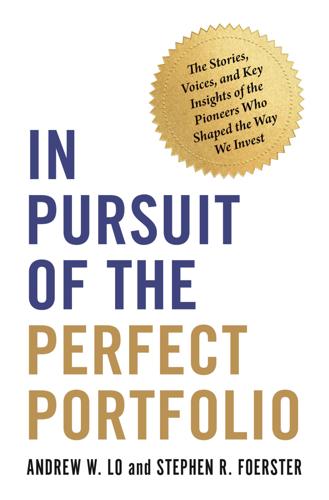
In Pursuit of the Perfect Portfolio: The Stories, Voices, and Key Insights of the Pioneers Who Shaped the Way We Invest
by
Andrew W. Lo
and
Stephen R. Foerster
Published 16 Aug 2021
In 1976, Merton and Scholes created the first options-based mutual fund, which provided investors with exposure to the stock market but with downside protection, a precursor to the portfolio insurance products that were popular in the 1980s. In 1988, Merton joined Salomon Brothers, the global investment bank then led by John Gutfreund, as a special consultant to the Office of the Chairman. John Meriwether was the head of the domestic fixed-income arbitrage group and had attracted many of Merton’s former students, most of whom had PhDs.56 Meriwether left Salomon Brothers in 1991, and in 1993 he had the idea to start a new firm. This would be a hedge fund named Long-Term Capital Management (LTCM), founded to undertake global fixed-income arbitrage on, for example, price discrepancies between similar bonds trading in different markets.
…
Buser (2005). 55. Information in this paragraph is from Merton (1997a). 56. In his entertaining book Liar’s Poker, Michael Lewis recounts his days with Salomon Brothers, providing an inside look into the investment bank culture in the 1980s. The title of the book is based on his recounting of how John Meriwether challenged John Gutfreund to a game of liar’s poker—a game of mathematical reasoning and bluffing based on serial numbers on random dollar bills—for a stake of $10 million. 57. Strategies and events were described in a series of Harvard Business School case studies titled “Long-Term Capital Management, L.P.” written by Andre F.
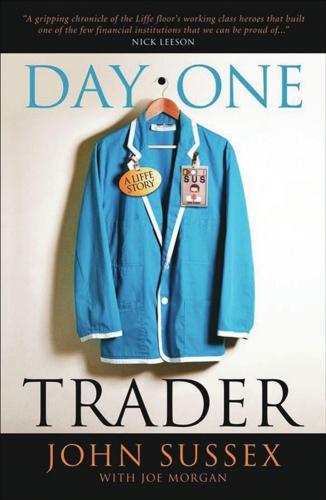
Day One Trader: A Liffe Story
by
John Sussex
Published 16 Aug 2009
Needless to say his brightly polished black shoes were well trodden on before the day’s trading was done. Locals on the Liffe floor could be just as vulnerable to cannons firing financial bombs out of America as the rest of the world’s economies when the excesses of US capitalism come unstuck. John Meriwether was in his prime as head of the domestic fixed income arbitrage group at Salomon Brothers when the Liffe market started to take off in the early eighties. Meriwether would often call dealers at Liffe to execute trades for him. During his tenure as Salomon’s floor manager in London, Ersser regularly spoke to Meriwether.
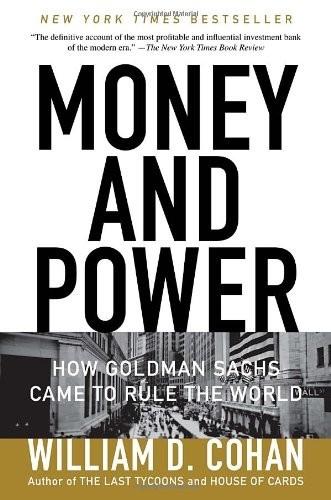
Money and Power: How Goldman Sachs Came to Rule the World
by
William D. Cohan
Published 11 Apr 2011
If anybody knows, they would”—but most people on Wall Street seemed to be caught up in the euphoria over the Goldman IPO. —— WHAT A SHAME, then, that a little crisis—in the form of the blowup of the hedge fund Long-Term Capital Management, or LTCM as it was known—would come along at just this moment to spoil Goldman’s coming-out party. LTCM was the brainchild of John Meriwether, a famed Salomon Brothers bond trader and one of Corzine’s trading heroes. Meriwether started LTCM in 1994. Corzine had considered having Goldman make an investment in LTCM and even considered buying the firm itself. But, in the end, Goldman decided to be one of LTCM’s many trading partners on Wall Street.
…
“He was doing this float-around,” Corzine told Lowenstein. “You’d lose contact and couldn’t speak for two to three hours.” But the message got through: “Buffett was willing to let Goldman handle the details, but under no circumstances did he want his investment to be managed by LTCM or to have anything to do with John Meriwether,” Lowenstein wrote. “Then the connection blacked out.” They spoke again on Saturday, and Buffett was still somewhat uncertain about a deal. Later that night, Corzine called Fisher and told him that a private rescue seemed unlikely. Fisher broached the idea of getting a group of the biggest banks together at the New York Fed and seeing if they could save LTCM.
…
He was included as a director and co-chairman of the firm “but will resign both positions immediately prior to the date of the” IPO, the document added, helpfully. He no doubt left with a fine consolation prize of more than 4 million Goldman shares, but it must have stung nonetheless to be so summarily excluded from the transaction he had worked tirelessly to make happen. —— IN THE FIRST few months after the coup, Corzine worked together with John Meriwether to try to buy LTCM back from the consortium of banks that owned it. But that had more or less fallen through—despite their putting together a syndicate willing to invest $2 billion—when Frank Lautenberg, the U.S. senator from New Jersey, announced in February 2000 that he was not going to seek reelection.
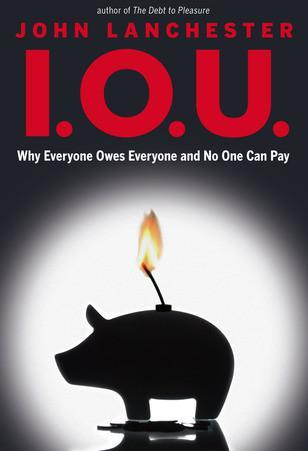
I.O.U.: Why Everyone Owes Everyone and No One Can Pay
by
John Lanchester
Published 14 Dec 2009
(It’s what Nick Leeson was supposed to be doing, exploiting tiny differences in the price of Nikkei 225 futures between the Osaka exchange, where trading was electronic, and the Singapore exchange, where it wasn’t. The gap in price would last only for a couple of seconds, and in that gap Barings would buy low and sell high—a guaranteed, risk-free profit.) The complexity of the mathematics involved in derivatives can’t be exaggerated. This was the reason John Meriwether, a famous bond trader, employed Myron Scholes—he of the Black-Scholes equation—and Robert Merton, the man with whom he shared the 1997 Nobel Prize in Economics, to be directors and cofounders of his new hedge fund, Long-Term Capital Management.* The idea was to use these big brains to create a highly leveraged, arbitraged, no-risk investment portfolio designed to profit no matter what happened, whether the market went up, down, or sideways or popped out for a cheese sandwich.
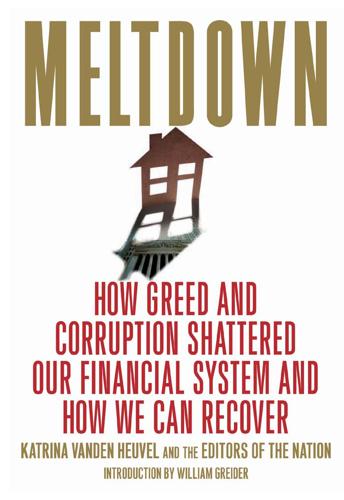
Meltdown: How Greed and Corruption Shattered Our Financial System and How We Can Recover
by
Katrina Vanden Heuvel
and
William Greider
Published 9 Jan 2009
That’s essentially what you need to believe if you want to categorically oppose hedge fund regulation, as the Bush administration does. Former Treasury Secretary Robert Rubin, hardly known for his hostility to capital flows, hints at this point in his memoirs, where he writes that his first reaction to the news of LTCM’s collapse was to say, “I don’t understand how someone like [head of LTCM] John Meriwether ... could get into this kind of trouble.” After all, Rubin notes, Meriwether was one of the country’s leading financial minds, and he had two Nobel laureates working with him. But they were “betting the ranch on the basis of mathematical models.” As with any bet, the only way to be sure you’ll win is to see into the future.

The Greed Merchants: How the Investment Banks Exploited the System
by
Philip Augar
Published 20 Apr 2005
This sense of security was shaken in September 1998, the month ‘when genius failed’ and Long-Term Capital Management, a high profile hedge fund, collapsed. The firm had about $5 billion of its own capital and borrowed getting on for $100 billion to leverage its trades. Under the leadership of John Meriwether, still then a legend for his time at Salomon Brothers, and with the expertise of a group of highly qualified arbitrageurs, professors and two Nobel Prize winners, the fund had a four-year winning streak of 40 per cent per annum and its models seemed infallible. However, the Russian financial default in the summer of 1998 set off a train of events that pushed market prices beyond what the firm’s models had predicted.
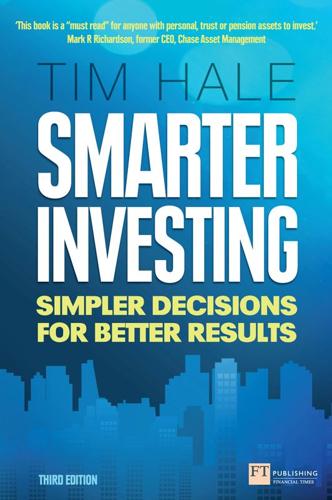
Smarter Investing
by
Tim Hale
Published 2 Sep 2014
However, the old behavioural trait of over-confidence appears to have struck, as the firm moved into other, less familiar markets. Luck versus skill is always hard to discern, even in those who have achieved extraordinary returns in the past. Other notable examples of just how difficult it is to exist: John Meriwether’s Long Term Capital Management, complete with two Nobel Prize winning economists, threatened to drag down the global financial system with it – the company had a $100 billion balance sheet when it got its view on Russia wrong and markets behaved out of line with expected, at least in their eyes, norms.
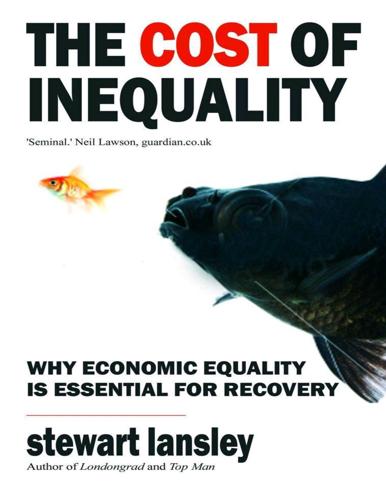
The Cost of Inequality: Why Economic Equality Is Essential for Recovery
by
Stewart Lansley
Published 19 Jan 2012
According to their architects, by anticipating and controlling the level of risk, finance could increase the level of liquidity in the markets and improve the level of efficiency with which resources were allocated, thus enabling a higher level of national and world economic activity. This claim seemed to be vindicated when two hedge fund partners, Myron Scholes and Robert Merton, won the Nobel Prize for economics in 1997. Their Greenwichbased firm, Long Term Capital Management had been founded by John Meriwether, a former highly successful bond trader at Salomon, Lewis’s boss and widely believed to be the inspiration for the Bonfire of the Vanities , Tom Wolf’s 1980s novel of Wall Street excess. For a while the heavily-leveraged operation grew to be one of the most lucrative of the American hedge funds.
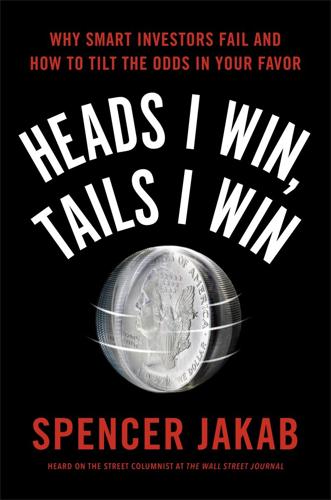
Heads I Win, Tails I Win
by
Spencer Jakab
Published 21 Jun 2016
If they had been baseball players, “all-star team” wouldn’t quite have cut it in describing their pedigrees. Many were the equivalent of Hall of Famers, including two Nobel Prize winners, a man mooted as a possible Federal Reserve chairman, and some of the most profitable bond traders on Wall Street. John Meriwether, among the top brass at Salomon Brothers during its heyday, described so colorfully in Michael Lewis’s Liar’s Poker, gathered this dream team in 1993. He decided to name his firm Long Term Capital Management. Having denizens of financial Cooperstown managing your money didn’t come cheap even by hedge fund standards.
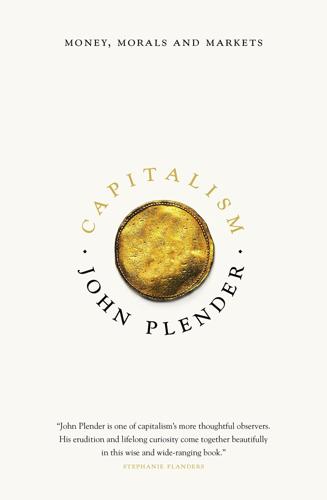
Capitalism: Money, Morals and Markets
by
John Plender
Published 27 Jul 2015
Another reason prices can diverge from fundamentals for a considerable period is that arbitrage, whereby investors simultaneously buy and sell identical or similar financial instruments which are temporarily mis-priced and thus bring prices back into line, is rarely free of risk. This was amply demonstrated by the near-collapse in 1998 of Long-Term Capital Management, a hedge fund run by former Salomon Brothers trader John Meriwether, which counted two distinguished finance academics, Robert Merton and Myron Scholes, on its strength. LTCM used complex mathematical models to exploit minute divergences in the relative value of different bonds. It was betting on the idea that the valuations would inevitably converge by buying the underpriced security and selling the overpriced security in the hope of making a small margin on the trade when convergence took place.
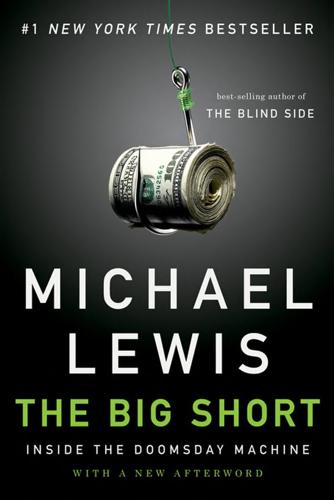
The Big Short: Inside the Doomsday Machine
by
Michael Lewis
Published 1 Nov 2009
In the two decades after I left, I waited for the end of Wall Street as I had known it. The outrageous bonuses, the endless parade of rogue traders, the scandal that sank Drexel Burnham, the scandal that destroyed John Gutfreund and finished off Salomon Brothers, the crisis following the collapse of my old boss John Meriwether's Long-Term Capital Management, the Internet bubble: Over and over again, the financial system was, in some narrow way, discredited. Yet the big Wall Street banks at the center of it just kept on growing, along with the sums of money that they doled out to twenty-six-year-olds to perform tasks of no obvious social utility.
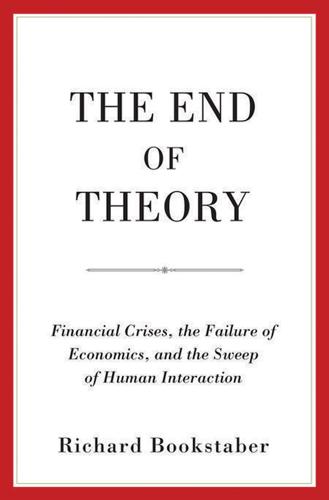
The End of Theory: Financial Crises, the Failure of Economics, and the Sweep of Human Interaction
by
Richard Bookstaber
Published 1 May 2017
If the perception had instead been that capital would be forthcoming, or if the letter had been successful in its (fairly transparent) pitch of new opportunities, the resulting actions would have been different. The failure might have been averted, and new opportunities could indeed have been seized. LTCM’s founder John Meriwether reflected after the calamity, quoting his colleague Victor Haghani, “The hurricane is not more or less likely to hit because more hurricane insurance has been written. In the financial markets this is not true. The more people write financial insurance, the more likely it is that a disaster will happen, because the people who know you have sold the insurance can make it happen.”
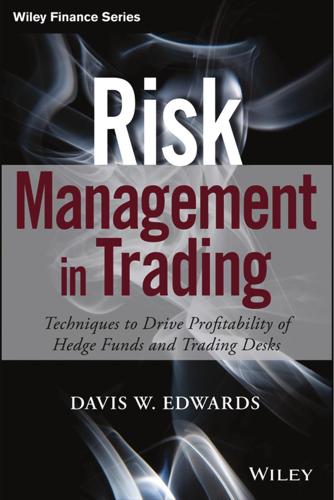
Risk Management in Trading
by
Davis Edwards
Published 10 Jul 2014
As a result, the dominant trader suffered mark‐to‐market losses, was unable to get out of their positions, and prices rebounded after the forced liquidation of the dominant market participant. Long Term Capital Management Long Term Capital Management (LTCM) went bankrupt in 1998 following a panic in Asian and Russian bonds. The hedge fund was the darling of Wall Street in the 1990s after being founded by the former vice‐chairman of Solomon Brothers, John Meriwether, and included Nobel Prize winners Myron Scholes and Robert Merton on its board of directors. LTCM was the dominant holder in several varieties of Russian bonds. Many of these bonds had identical payoffs differentiated by different rules on trading prior to expiration. If held to maturity, these bonds would have provided a guaranteed profit.
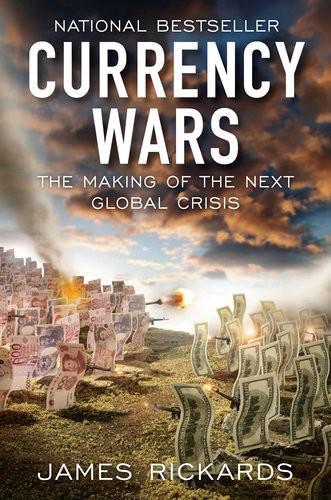
Currency Wars: The Making of the Next Gobal Crisis
by
James Rickards
Published 10 Nov 2011
Thank you to my economics mentors, John Makin, Greg “the Hawk” Hawkins, David Mullins, Jr., Myron Scholes and Bob Barbera. Given my heterodox theoretic approach to their field, I thank them for listening and sharing their thoughts and views. Thanks also to my market mentors, Ted Knetzger, Bill Rainer, John Meriwether, Jim McEntee, Gordon Eberts, Chris Whalen, Peter Moran and Dave “Davos” Nolan. Davos and I shorted Fannie Mae stock at $45 per share in 2005 and lost money when it went to $65. Today it trades for 39 cents. Timing is everything. With Washington, D.C., now the financial as well as political center of the universe, a book like this could not have been written without the support and encouragement of, and many sets of intellectual ping-pong with, those who are closest to the power.
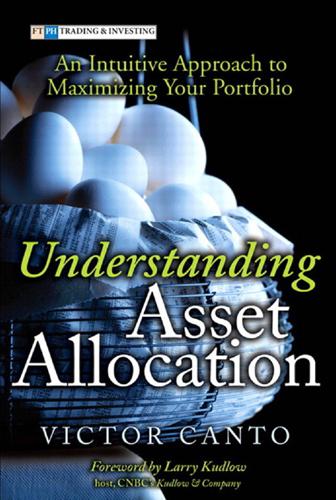
Understanding Asset Allocation: An Intuitive Approach to Maximizing Your Portfolio
by
Victor A. Canto
Published 2 Jan 2005
Short Selling strategies maintain a net or simple short exposure relative to the market. Chapter 12 Keeping the Wheels on the Hedge-Fund ATV 227 The potential downside of hedge-fund strategies is, if misapplied, they can bring disastrous results. The Long-Term Capital Management (LTCM) debacle is such an example. John Meriwether, a bond trader from Salomon Brothers with a well-known and favorable track record, founded LTCM in 1993. Investment banks quickly poured more than $1 billion into the fund, yet in only a few years the fund was well overexposed to risk and near belly-up. Many consider LTCM to be a worst-case scenario—the hedge-fund ghost haunting the sector to this day.
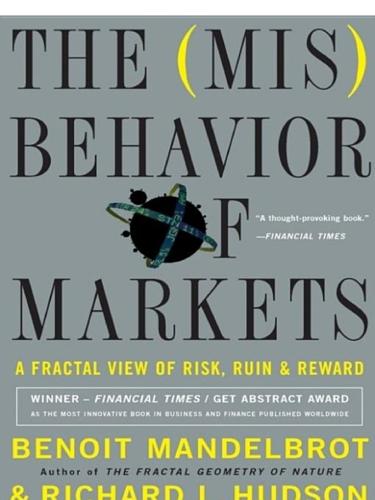
The Misbehavior of Markets: A Fractal View of Financial Turbulence
by
Benoit Mandelbrot
and
Richard L. Hudson
Published 7 Mar 2006
In the end, several banks reluctantly agreed to bail out the fund through a $3.625 billion takeover. That came only at the behest of the Federal Reserve Board, which was concerned about a wave of bankruptcies if LTCM went under. Scholes himself later denied that the option-pricing models played any but “a minor role” in the debacle. But some of his partners do not see it quite that way. John Meriwether, the fund’s prime mover and the man who may have lost the most, $150 million, told the Wall Street Journal: “Our whole approach was fundamentally flawed.” In launching a new fund in 2000 (Wall Street folk are nothing if not resilient), he observed: “With globalization increasing, you’ll see more crises.

The Wisdom of Crowds
by
James Surowiecki
Published 1 Jan 2004
This is what John Maynard Keynes meant when he said that markets can stay wrong longer than you can stay solvent. In the summer of 1998, a small group of experts forgot this lesson and in the process brought the world to the brink of financial catastrophe. The experts worked for Long-Term Capital Management (LTCM), a hedge fund that was started in 1994 by John Meriwether, a former bond trader whose trading skills had made him a legend on Wall Street. From the outside, LTCM looked a little like the Manhattan Project of investing. Meriwether had hired a host of Wall Street whiz kids who were experts in using computer models to figure out how to make money. And he’d brought on board some of the founding fathers of modern finance.

Capital Ideas Evolving
by
Peter L. Bernstein
Published 3 May 2007
The events of 1998 have special interest for the story in this book, because the crisis was brought to a head in the financial markets by the imminent failure of a hedge fund called Long-Term Capital Management, or LTCM, which had opened for business in February 1994. Nobel Prize winners Robert C. Merton and Myron Scholes were partners in LTCM, and the managing partner was John Meriwether, the legendary bond trader from Salomon Brothers. The repercussions of a possible LTCM default were viewed as so serious in financial markets around the world, especially in view of the participation of Merton and Scholes, that the Federal Reserve Bank of New York had to organize a bailout to prevent this disaster from becoming a reality.
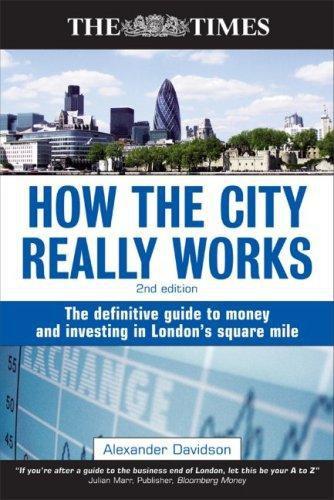
How the City Really Works: The Definitive Guide to Money and Investing in London's Square Mile
by
Alexander Davidson
Published 1 Apr 2008
London is the largest hedge fund management centre in Europe, and second in size only to the United States. A hedge fund can fail as well as succeed, and it may be on a spectacular scale. Long Term Capital Management (LTCM) demonstrated the point with its high-profile failure in 1998. It was a hedge fund headed by John Meriwether, who had previously run the bond trading operations of Salomon Brothers. The fund was highly geared and used derivatives, taking positions in bonds. The mathematical model on which the fund manager relied failed to take into account the flight to liquidity in the debt markets after Russia defaulted on its sovereign debt in August and September 1998.
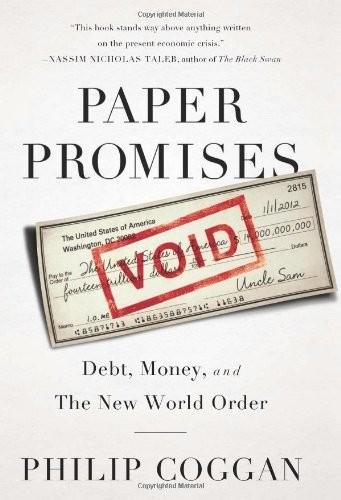
Paper Promises
by
Philip Coggan
Published 1 Dec 2011
Such insurance can be easy to purchase in good times, but in bad times, no one will be willing to provide it. The system cannot insure itself. Making a huge bet, particularly on illiquid assets, is thus a very perilous pastime. The collapse of Long-Term Capital Management in 1998 was a classic example of this. LTCM was a hedge fund led by a bond trader called John Meriwether who had worked at Salomon Brothers, then one of Wall Street’s leading firms. He hired a stellar team, including two Nobel prize-winning economists, Robert Merton and Myron Scholes. LTCM pursued a strategy called arbitrage, buying assets that looked artificially cheap and selling short (betting on a falling price) similar assets that looked expensive.
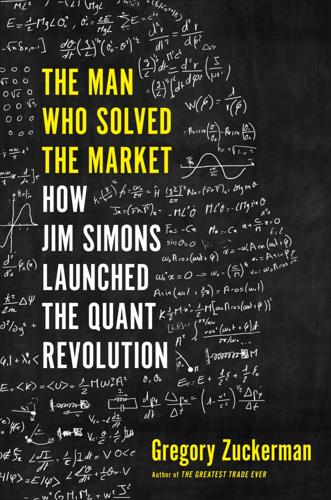
The Man Who Solved the Market: How Jim Simons Launched the Quant Revolution
by
Gregory Zuckerman
Published 5 Nov 2019
The embarrassed representative had to ask the visitor to kindly turn off his machine. They were going a bit overboard. At that point, no one really cared what Simons and his team were up to. His two largest rivals, Long-Term Capital Management and D. E. Shaw, were commanding the full attention of investors. Founded by John Meriwether—himself a former mathematics instructor—Long-Term Capital Management also filled its ranks with professors, including Eric Rosenfeld, an MIT-trained finance PhD and computer devotee, and Harvard’s Robert C. Merton and Myron Scholes, who would become Nobel laureates. The team—mostly introverts, all intellectuals—downloaded historic bond prices, distilled overlooked relationships, and built computer models predicting future behavior.
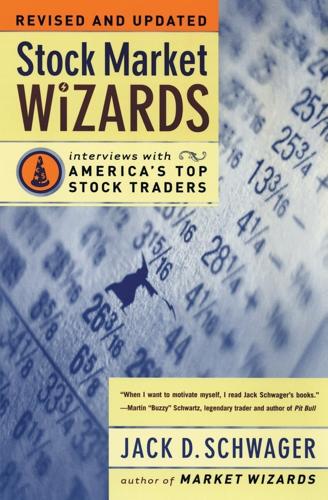
Stock Market Wizards: Interviews With America's Top Stock Traders
by
Jack D. Schwager
Published 1 Jan 2001
While our losses were much smaller, in both percentage and absolute dollar terms, than those suffered by, for example, Long Term Capital Management, they were significant enough that we're no longer engaged in this sort of trading at all. LTCM—a hedge fund headed by renowned former-Salomon bond trader John Meriwether and whose principals included economics Nobel laureates Robert Merton and Myron Scholes—was on the brink of extinction during the second half of 1998. After registering an average annual gain of 34 percent in its first three years and expanding its assets under management to near $5 billion, LTCM lost a staggering 44 percent (roughly $2 billion) in August 1998 alone.
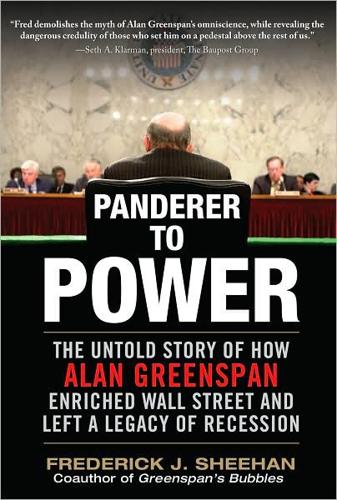
Panderer to Power
by
Frederick Sheehan
Published 21 Oct 2009
According to Scholes, Enron’s trading of unregulated over-the-counter energy derivatives was a new model that someday would replace the organized [and regulated] securities exchanges.”6 Enron’s specialized derivatives left the company bankrupt in 2001, and General Electric’s financial ventures led it to government life support by 2008. The year after Merton and Scholes received their Nobel Prizes, the firm where they applied their theories collapsed. John Meriwether had anticipated the derivatives boom by forming his Arbitrage Group at Salomon Brothers in 1977.7 Meriwether left Salomon in 1991. In 1993, he formed LongTerm Capital Management (LTCM). He hired his top Salomon colleagues, including Merton and Scholes. By 1997, LTCM employed 25 Ph.D.s, who manufactured highly quantitative arbitrage trades.
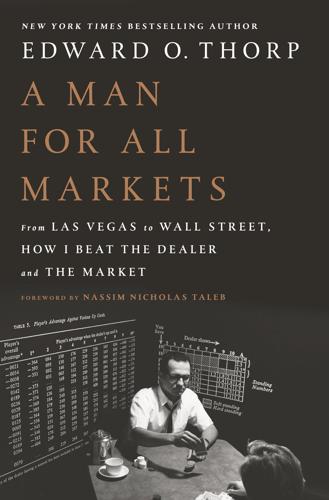
A Man for All Markets
by
Edward O. Thorp
Published 15 Nov 2016
The list of issues goes on, the point being that hedge fund investors don’t have much protection and that the most important single thing to check before investing is the honesty, ethics, and character of the operators. The hedge fund Long-Term Capital Management was launched in 1994 with a dream team of sixteen general partners, led by the legendary former Salomon Brothers trader John Meriwether and two future (1997) Nobel Prize winners in economics, Robert Merton and Myron Scholes. The group included other former Salomon traders, more distinguished academics, and a former Federal Reserve vice chairman. Investors included the central banks of eight countries, plus major brokerages, banks, and other institutions.
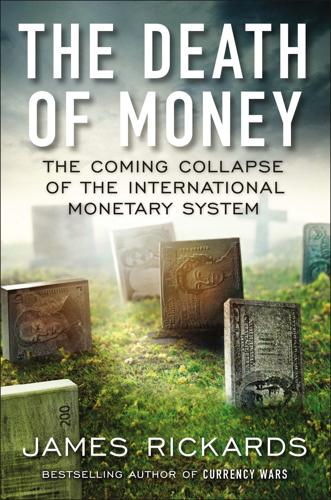
The Death of Money: The Coming Collapse of the International Monetary System
by
James Rickards
Published 7 Apr 2014
While LTCM was a well-known trader in fixed-income and derivatives markets, the extent of its trading in equity markets was not well known. LTCM was the largest risk arbitrageur in the world, with over $15 billion in equity positions on pending deals. Upon reviewing the books and records of LTCM with the author and CEO John Meriwether on September 20, 1998, Peter R. Fisher, then head of open market operations at the Federal Reserve Bank of New York, remarked, “We knew you guys might take down the bond markets, but we had no idea you would take down the stock markets too.” The Fed’s effort to orchestrate a bailout commenced the next morning and was completed on September 28, 1998.

Culture and Prosperity: The Truth About Markets - Why Some Nations Are Rich but Most Remain Poor
by
John Kay
Published 24 May 2004
"When the allocation of capital is the byproduct of the activities of a casino, the job is likely to be ill done," Keynes wrote in the aftermath of the bubble of 1929, but his words are equally relevant to the bubble of 2000. The outcomes of LTCM, Bankers Trust, and Hurricane Hugo were perhaps adaptive, in the sense that people who mismanaged risk lost their jobs, their wealth, or went out of business (although not for long: John Meriwether, the creator of LTCM, was back in business fifteen months later soliciting money for his Relative Value Opportunity Fund). 22 But the outcomes were not efficient in either the technical or the ordinary sense of market efficiency. The concept of an efficient market in risk, which manages for us the risks inherent in modern economic life, is attractive.
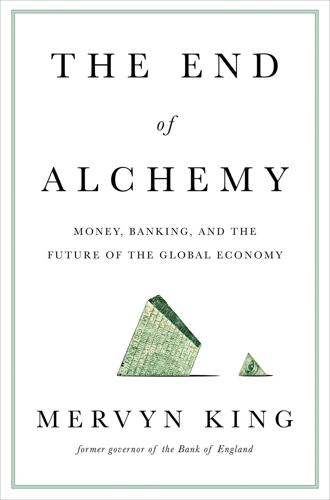
The End of Alchemy: Money, Banking and the Future of the Global Economy
by
Mervyn King
Published 3 Mar 2016
Paul Lambert, Aston Villa manager, press conference, 22 November 2013 Are we really capable of expecting the unexpected?1 In 1998, the hedge fund Long-Term Capital Management (LTCM) failed, although its senior management team comprised two Nobel Laureates in Economic Science, Myron Scholes and Robert Merton, and an experienced practitioner in financial markets, John Meriwether. Their strategy, successful at first, was to create a highly leveraged fund that bought large amounts of one asset and sold equally large amounts of a slightly different asset (for example, government bonds of slightly different maturities), so as to exploit anomalies in the pricing of those assets.
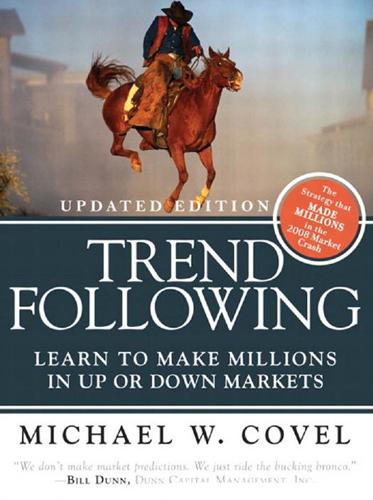
Trend Following: How Great Traders Make Millions in Up or Down Markets
by
Michael W. Covel
Published 19 Mar 2007
LTCM attracted the elite of Wall Street’s investors and initially reaped fantastic profits managing their money. Ultimately, their theories collided with reality and sent the company spiraling out of control.24 Needless to say, this was not supposed to happen: “They were immediately seen as a unique enterprise. They had the best minds. They had a former vice chairman of the Federal Reserve. They had John Meriwether…So they were seen by individual investors, but particularly by banks and institutions that went in with them, as a ticket to easy street.”25 The most damaging consequence of the LTCM episode is, therefore, the harm done by the perception that Federal Reserve policy makers do not have the faith to take their own medicine.

Adaptive Markets: Financial Evolution at the Speed of Thought
by
Andrew W. Lo
Published 3 Apr 2017
Evolutionary competition caused hedge funds to trawl the universities for high-caliber mathematical talent, not merely in finance, but in physics, mathematics, and computer science—the rise of the “quants.” One of the most audacious experiments in this new style of hedge fund was based in Greenwich, Connecticut. It called itself Long-Term Capital Management, or LTCM, as it soon became known. LTCM was the brainchild of John Meriwether, the former head of the domestic fixed-income arbitrage group at Salomon Brothers, once one of Wall Street’s largest investment banks. Meriwether conceived LTCM to operate on a grand scale. If we think of hedge funds as analogous to biological species, then Meriwether’s vision of LTCM was to be one of the great filter-feeding whales of the oceanic depths, using very small fluctuations in the world’s bond markets for its financial sustenance.
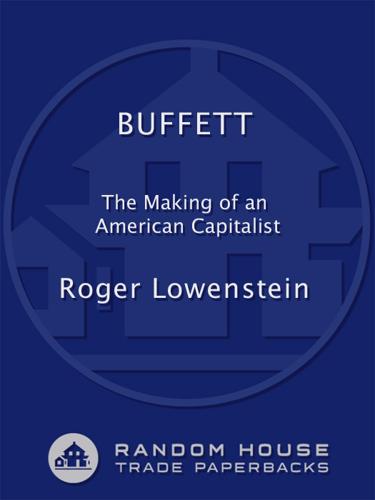
Buffett
by
Roger Lowenstein
Published 24 Jul 2013
Short and thick-lipped, he would stroll past rows of traders, trailed by a vaporous cloud of cigar smoke. With his plum-sized jowls, he would lacerate underlings in full view of their peers. “He’d take someone to task,” a partner recalled. “He could turn you into a pile of shit on the floor.” Gutfreund was said to have dared his star bond trader, John Meriwether, to bet $1 million on a single round of liar’s poker, a game that traders played during lulls in the bond market. The incident, described in Liar’s Poker, a best-selling insider’s account of the firm, was probably invented, but it enshrined Gutfreund’s image as a trader’s trader.* When not playing poker, Meriwether’s bond wizards, some of whom held Ph.D.s, made million-dollar bets on changes in interest rates using complex trading formulas.
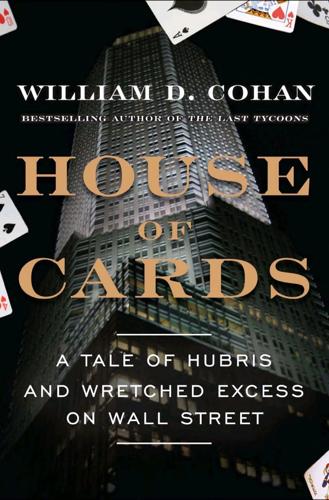
House of Cards: A Tale of Hubris and Wretched Excess on Wall Street
by
William D. Cohan
Published 15 Nov 2009
“Both important and large. Both squared.” A couple of years before he resigned, Mattone, who sported a tremendous girth, a gold chain, and a pinky ring, had wanted to join a new start-up hedge fund, Long-Term Capital Management—LTCM for short—which was the brainchild of his former buddies at Salomon Brothers. John Meriwether, LTCM's founder and a famed Salomon bond trader, wanted Mattone to be the sixth partner of the fund, which was headquartered in Greenwich, Connecticut. As Cayne explained, Mattone came to him and said he had an opportunity to join Meriwether. “I said, ‘Vinny, are you nuts?’” Cayne remembered.